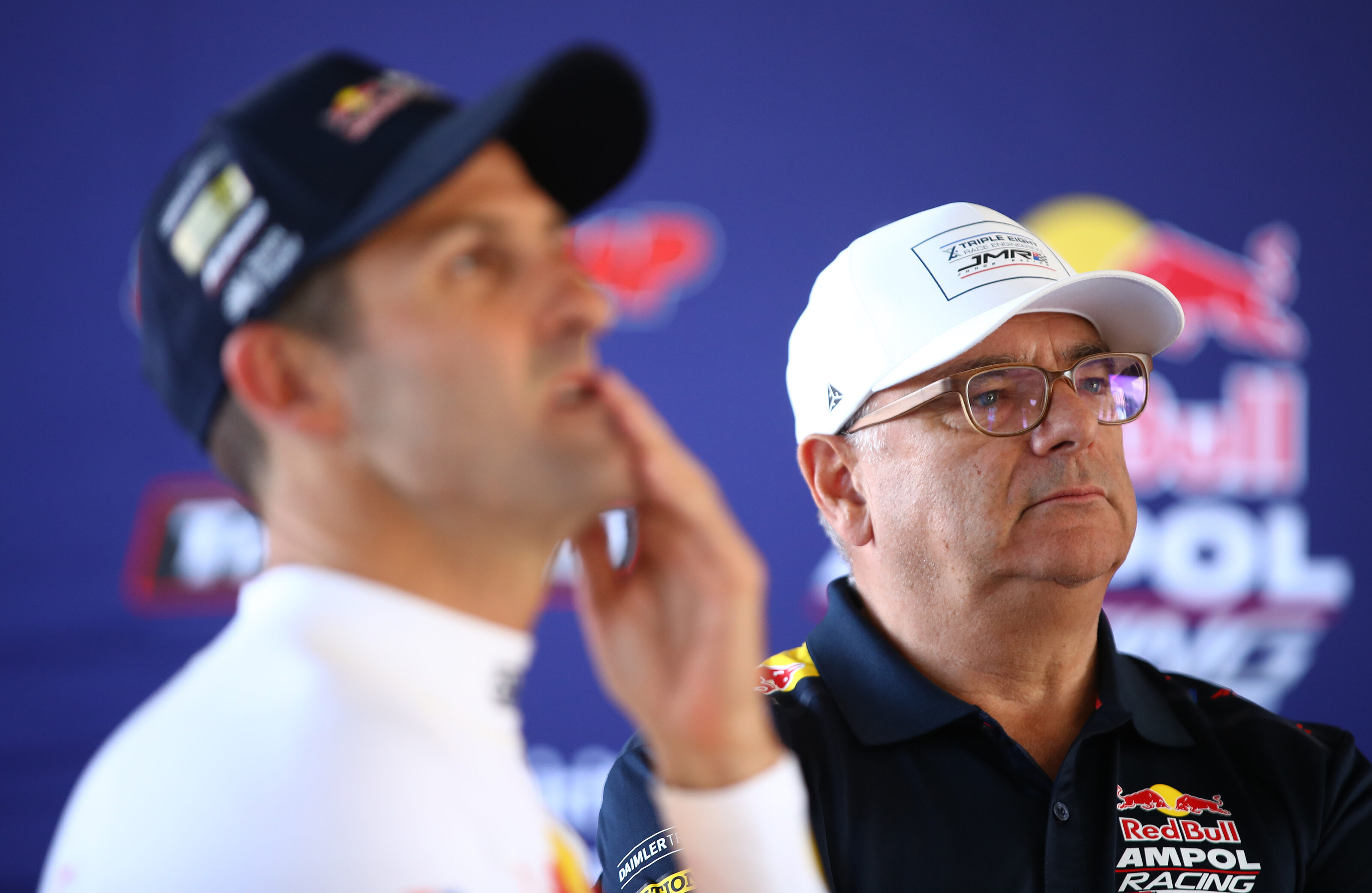Queensland Raceway, July 2003. At the most unprepossessing track in the country, leading British touring car team owner Roland Dane visits with one of his business partners.
They have come to buy a V8 Supercars team and the QR round is part of their reconnaissance. Dane and his cohort Peter Butterly think they will roam the V8 paddock unrecognised.
To their dismay, I’m there. I have just returned from a long stint overseas, including several years covering the BTCC, and already have a long history with Dane.
His appearance at QR coincided with my first event back in Australia after being repatriated to become editor of motor racing magazine Auto Action. You should have seen the look on his face when he ran into me.
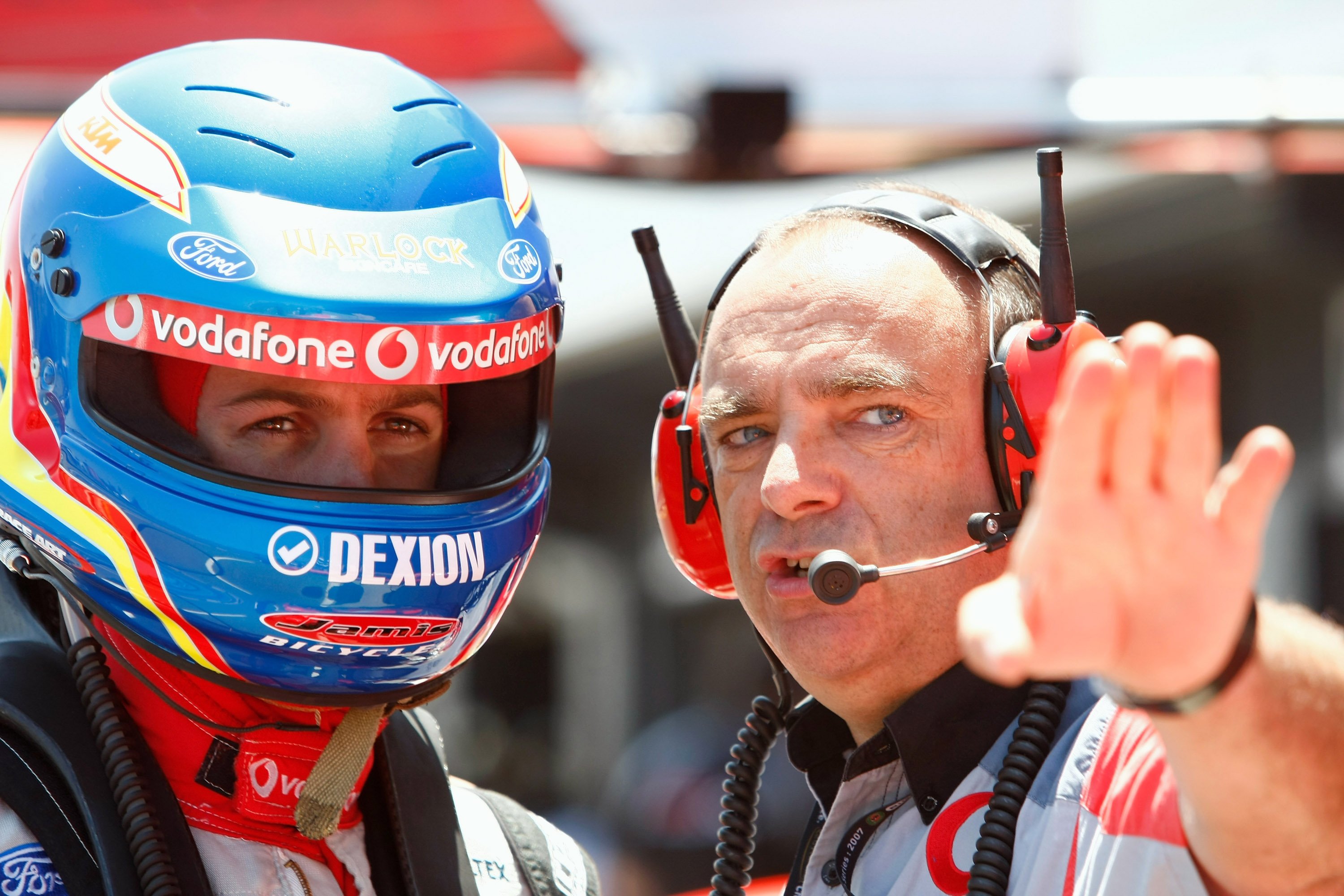
“Hi, Roland, what are you doing here?” I teased. Dane visibly blanched, his cover is blown. No-one else in the media knew him and I was the last person he was expecting to see at the rustic Ipswich track.
Dane’s presence was a short walk to a major news story that Triple Eight Race Engineering, a leading squad in the BTCC since 1997 and dominant from 2001, was looking to establish a V8 Supercars operation. Two months later, Triple Eight was on the grid at the Sandown 500.
Nearly two decades on, Dane is the most successful Supercars team owner ever, winning 200 races, eight drivers’ titles, nine teams’ crowns and eight Bathurst 1000s.
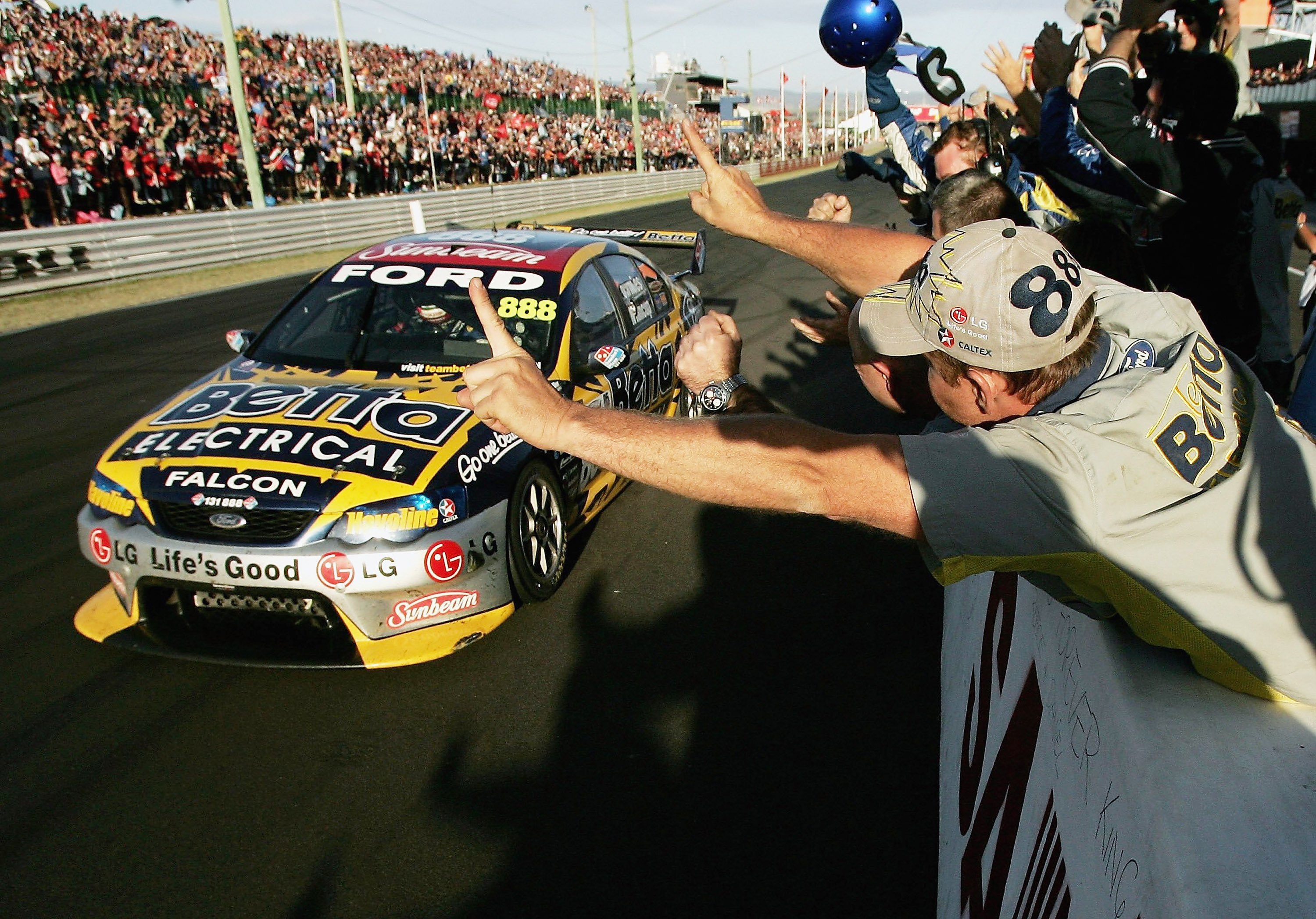
At the end of this season, he is retiring as team principal, handing over the reins to Jamie Whincup, Red Bull Ampol Racing’s record seven-time V8 champion who is in his final full-time campaign as a driver.
Few, if any, successions of team leadership in top-level motor racing have been so significant. The greatest squad in Australian touring car racing history stands on the brink of sustained success – or the death of a dynasty.
Triple Eight’s achievements have reflected Dane’s drive, commitment, competitiveness, power, ruthlessness and passion. Without him at the helm, will it continue as the benchmark?
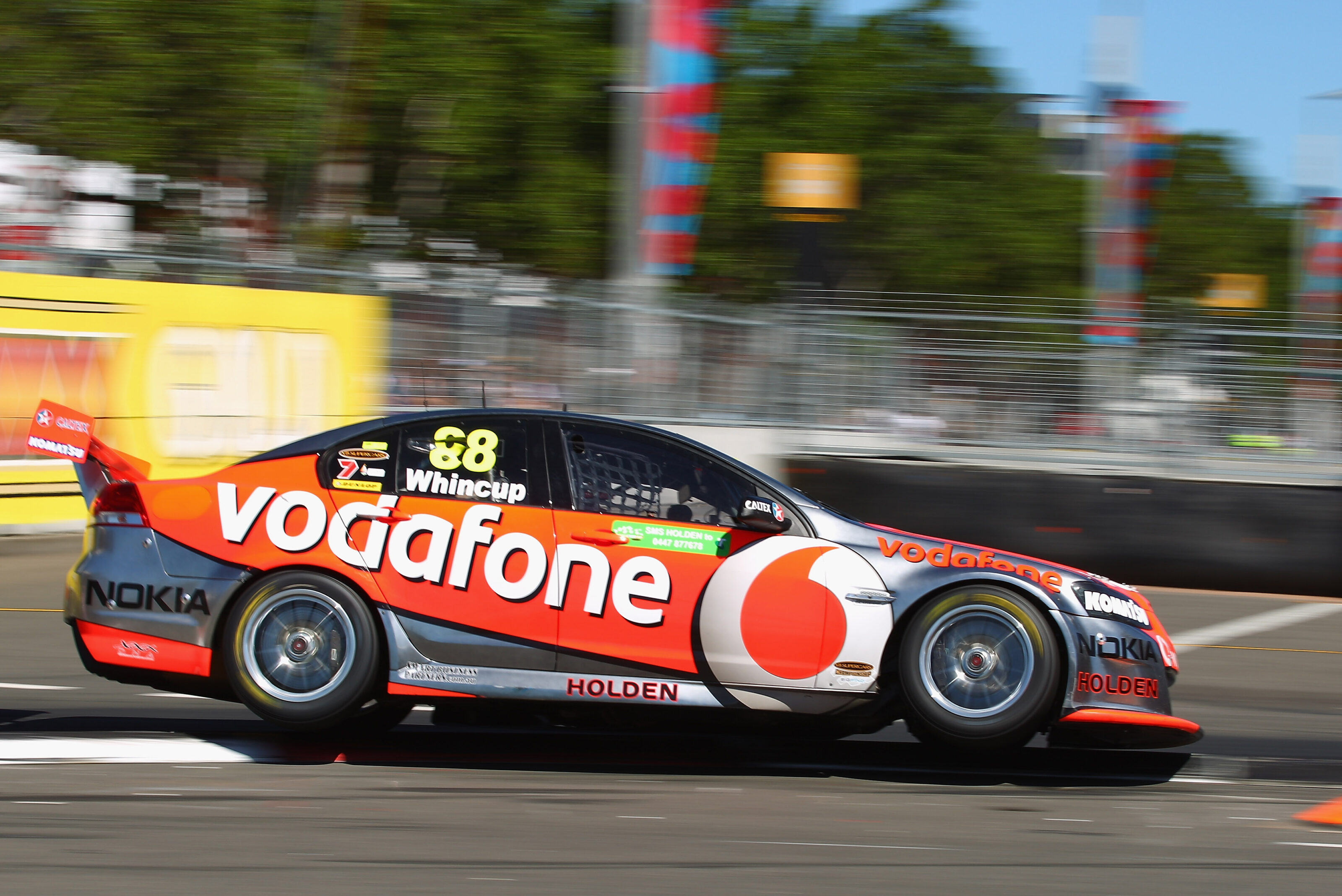
His reign has been a polarising – many say divisive – period in Supercars’ rise and slip since the mid-2000s. Love him or loathe him, this imperious Anglo-Irish-Australian is a big part of the survival of Supercars as the most competitive, most professional and most spectacular touring car racing series in the world.
Dane’s detractors charge that he has exercised undue self-interest to influence the sport. Cars built by his Brisbane-based company dominate the grid and his rivals claim he wields excessive behind-the-scenes power. He is accused of manipulating rules and policy to suit his own agenda.
His supporters point to his team raising the standards of presentation, commercial acuity and efficient operation in V8 racing to new heights.

Dane, who recently turned 65, is a conflicting character. Publicly, he appears arrogant, dismissive and superior. He really doesn’t care what people think about him. It does, of course, help his disdain that he is extremely rich, thanks to his business acumen. He has made millions from motor racing, but his real fortune is founded in automotive wheeling and dealing in the UK and Asia. As he freely admits, “I’m a car dealer at the end of the day.”
Away from racing, Dane is urbane, articulate, informed, entertaining and insightful. Like former Formula 1 czar Bernie Ecclestone, there is an underlying enthusiasm and concern for racing. Unfortunately, there is also a strong suspicion that, again like Bernie, his love of racing is over-ridden by his greater passion for power. It is easy to admire Dane, but difficult to embrace him.
Fans and rival team owners regard him with extreme distrust. Jealousy is also a factor. Mostly, Dane is guilty of running a winning operation that for much of the past 14 years has always been in contention for race wins and championships. Except for American mogul Roger Penske’s incursion from 2015-2020, Triple Eight has had the classic combination for success: biggest budget, best drivers and sharpest people.
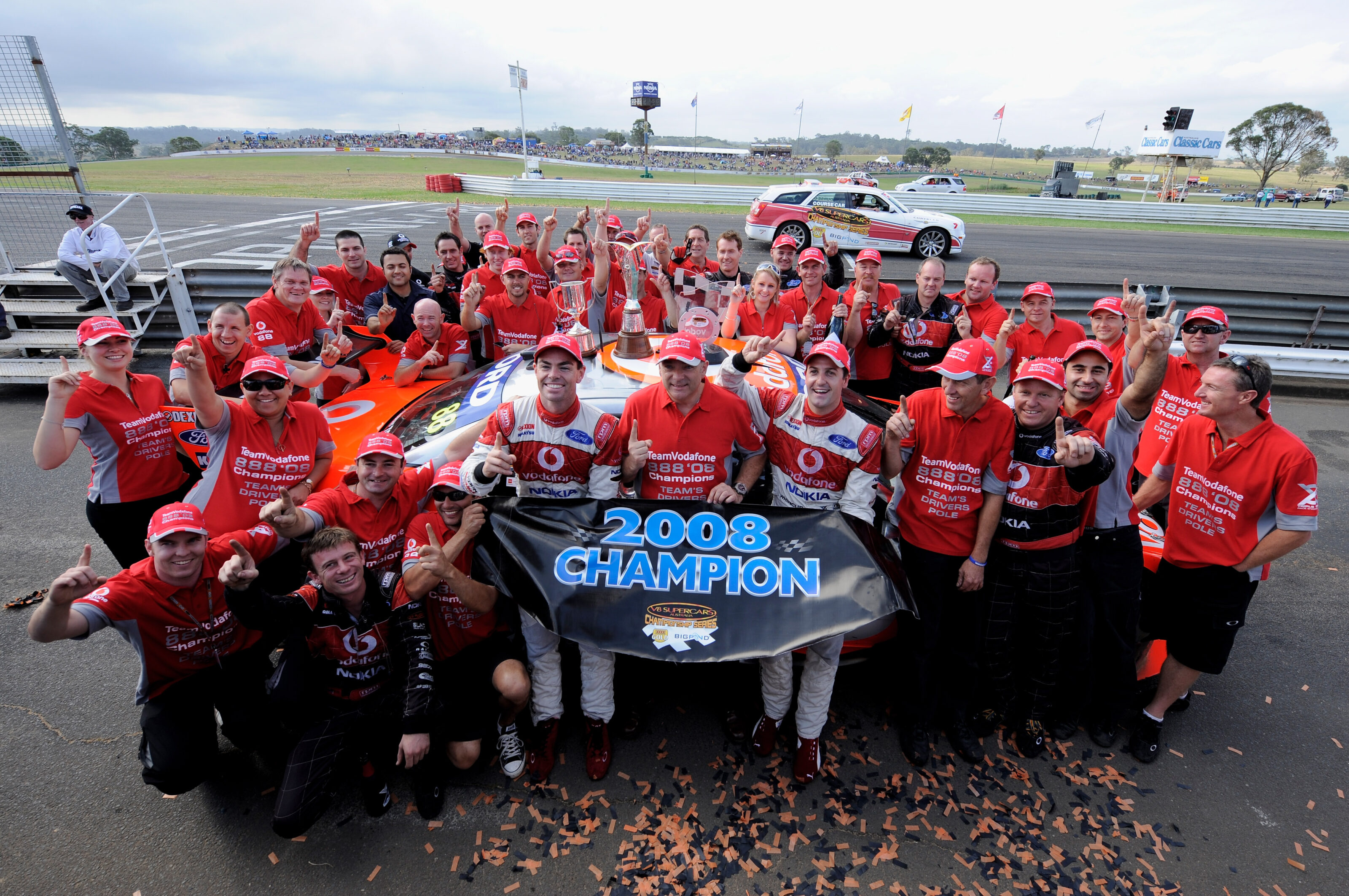
As he prepares to depart, Dane’s team is back on top, with preternatural talent Shane van Gisbergen well on his way to winning what has become another COVID-disrupted championship. On his farewell tour, Whincup is a solid second, helping Triple Eight reclaim its teams’ crown from Penske-less DJR, which is also without triple champion Scott McLaughlin.
The balance of power has shifted back to the Bulls, who have signed 18-year-old prodigy Broc Feeney to fill Whincup’s seat from next year. Feeney is the epitome of next-gen Triple Eight, waiting in the wings to succeed the mercurial SVG, just as Whincup was apprenticed to superstar Craig Lowndes in 2006.
The new management will be Whincup along with Dane’s eldest daughter Jessica, supported by an established after-guard – team manager Mark Dutton and technical director Jeromy Moore (back after a successful stint with Porsche in Le Mans sports car racing).
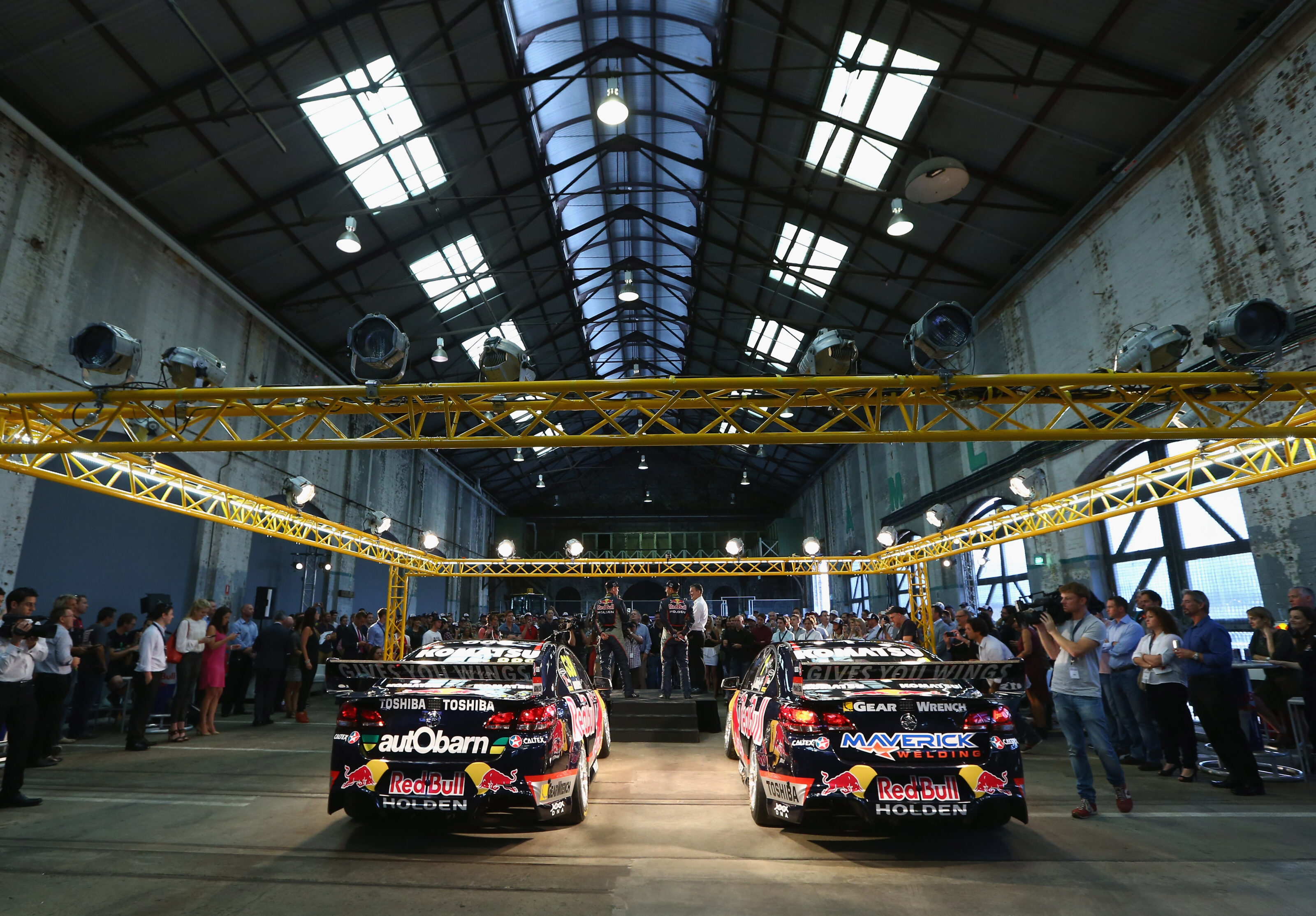
Jess Dane is poised and proactive. She has learned the business from the inside while gaining external experience as a broadcaster. She is also close to completing a law degree.
Crucially, Jess is active in women’s affairs in international motorsport, bringing diversity and equality to Triple Eight. It’s difficult to regard gruff, strutting ‘RD’ as enlightened, but he has encouraged her to be her own person. She is a polished professional whose presence gives the team a modern face.
RD has not made it easy for her to gain executive status in the family firm, but she has risen to the challenge to earn the second-largest shareholding in Triple Eight – 30 percent. Entrepreneur/racer Tony Quinn is the ‘silent’ majority owner with 40 percent, while Whincup holds 19 percent and Dane – as chairman – retains 11 percent.
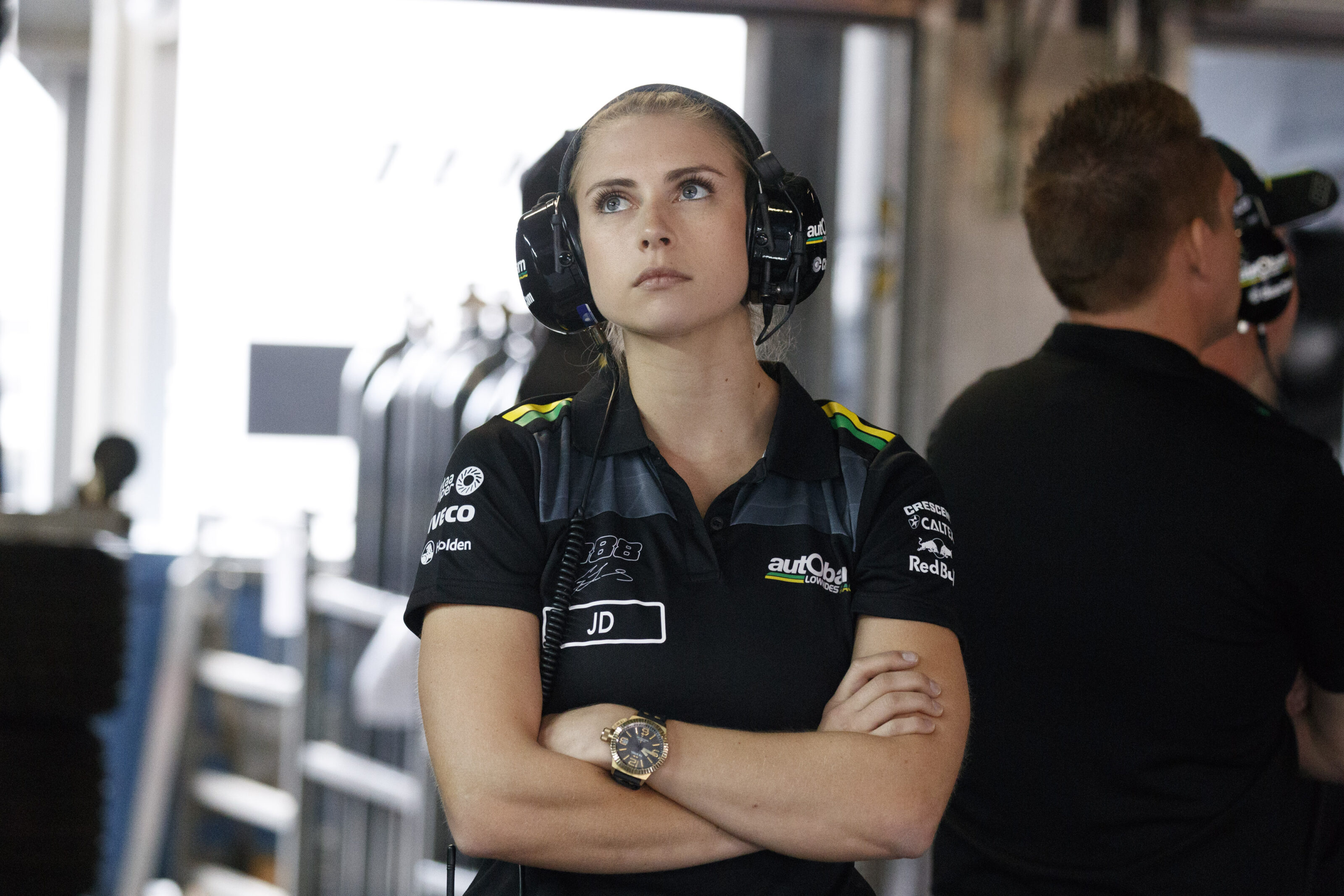
Triple Eight ran under the Red Bull Holden Racing Team banner from 2018-2020, taking over sole factory team status from Walkinshaw Racing, which had been the Lion’s flag-bearer since 1990.
Following Holden’s demise, the Banyo-based squad will switch from the ZB Holden Commodore to the Chevrolet Camaro under the new Gen3 rules, now delayed until 2023. Along with new ownership of Supercars, the changes for the team and the sport will be tumultuous.
In the 35 years I have known him, Roland Dane has been consistently fastidious and obstreperous. From the British Touring Car Championship’s glory days in the mid-to-late ’90s to Supercars this century, he has been a force. We’ve clashed, fallen out, made up, argued, agreed and ultimately accommodated each other. We are not friends, but we are friendly and respect each other through a long association.
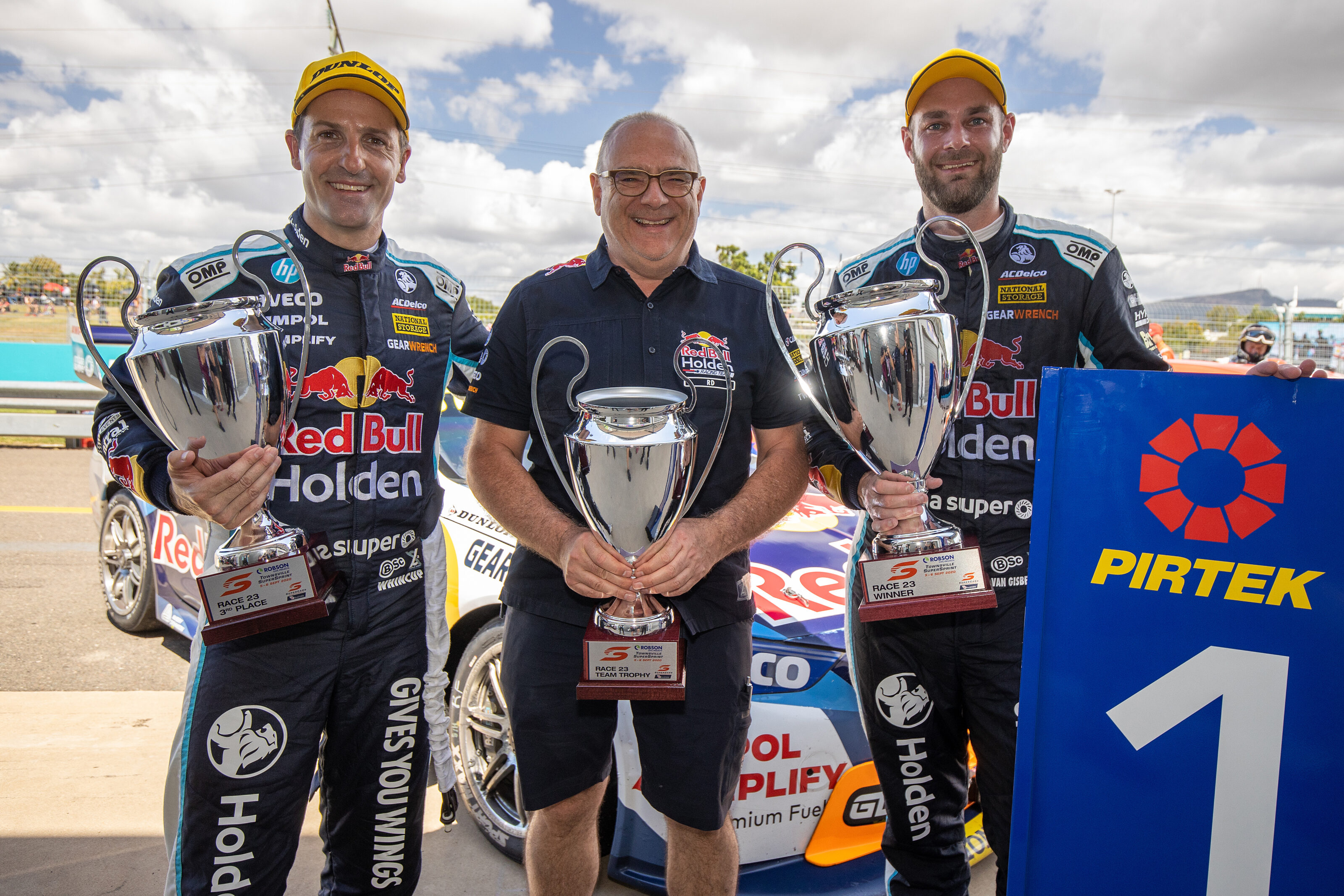
Wind back the clock to late May, 1986. At the Belgian Grand Prix at the famed Spa-Francorchamps circuit, I meet Roland Dane for the first time. Our mutual acquaintance is veteran F1 reporter Mike Doodson. Dane is there as friend of F1 driver Derek Warwick, driving for Brabham. He strikes me as a hanger-on. I am wrong. Six years later, we meet again. He is an emerging power in the BTCC as it embarks on its Super Touring glory years.
Dane becomes a force in the strongest 2.0-litre touring series in the world, with Triple Eight taking over as the Vauxhall (GM) factory team in ’97. Following a rules change in 2001, his Vauxhall team dominates for the next several years.
In the BTCC’s Super Touring era, I had a lot to do with Dane. He was hard, uncompromising, detail-oriented and driven. He clashed with tough, expat-Aussie BTCC boss Alan Gow often.

When Dane arrived in Australia, I knew enough to know that he would make a big impression. And he did, snaring V8 legend Craig Lowndes in 2005, joined by superstar-to-be Jamie Whincup in ’06.
J-Dub won his first race with Triple Eight at the Adelaide 500 – and the rest is history. They combined later that year to win the Bathurst 1000, an emotional victory for Lowndes just weeks after the death of his friend and mentor Peter Brock.
Dane may not have foreseen Whincup’s potential as Supercars’ GOAT – Greatest Of All Time – but he had the wit to sign a discarded talent on a hunch.
Two things tell you much about Dane – and they are inter-related. His team’s full name is Triple Eight Race Engineering. Like the F1 bosses of the 1980s that inspired him, he regarded his team as a race engineering business, building cars and bits as well as racing them.
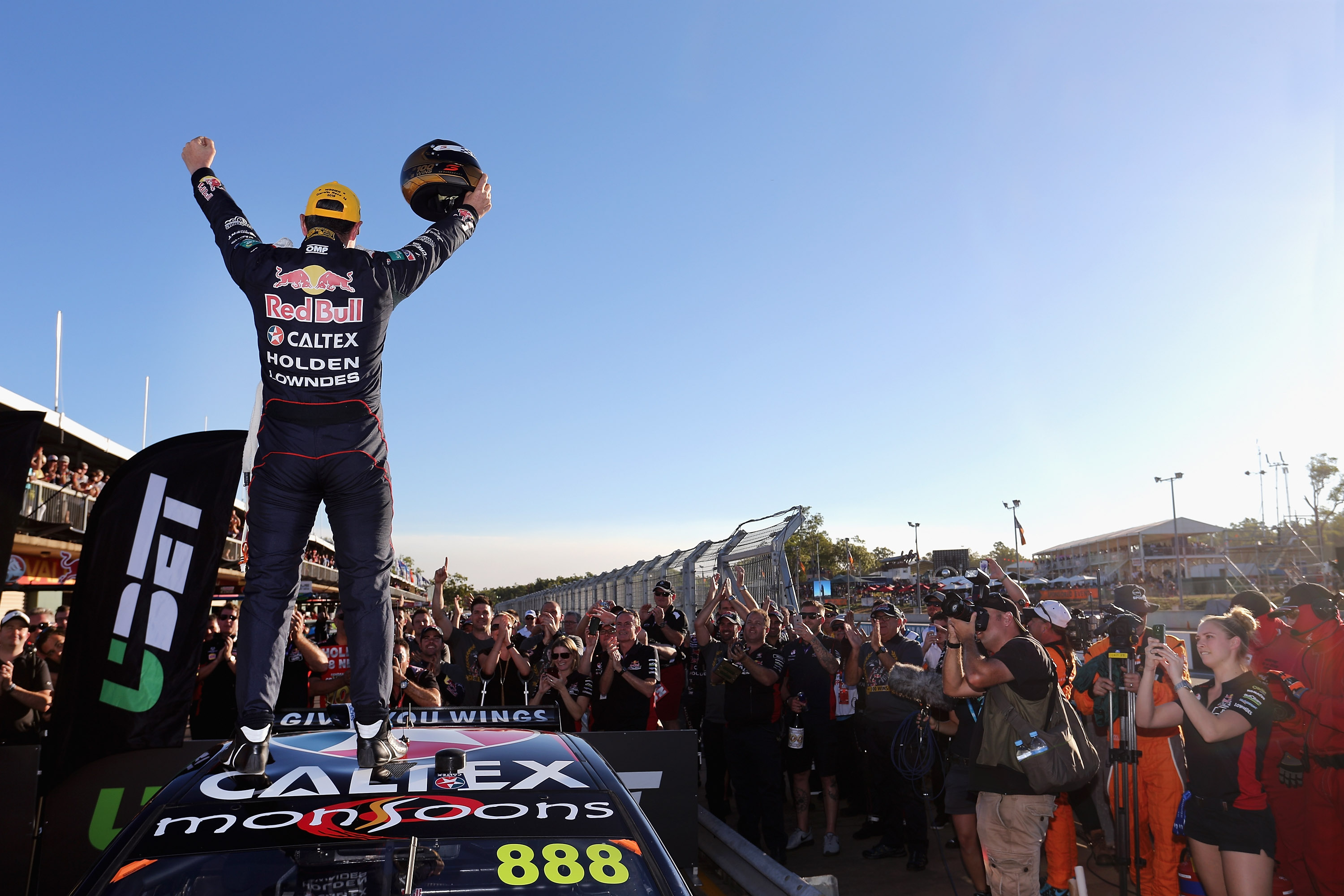
A core of Triple Eight’s existence has always been making cars and components – especially its category leading front suspension uprights – for other teams. While it is the Camaro homologation team, Gen3’s emphasis on cost-cutting standardisation will all but eliminate its bespoke engineering.
But the team’s history and success are founded upon in-house development, hence its traditional full name.
The Triple Eight name itself is partly the subject of an urban myth. Before gaining the Vauxhall BTCC factory deal in ’97, Dane, Warwick and ex-Williams F1/Renault BTCC team manager Ian Harrison planned to pitch to run a Honda team.
The popular legend is that 888 was Dane’s idea to capitalise on eight being a lucky number in Asian culture. Only partly correct.“Eight is a very significant number in China, but not in Japan,” he recalls, having established a big business in trading cars between the UK and the Far East. “It resonated in Asia, though, and it was certainly influenced by my experiences in Asia and the good fortune I’d had out of doing business there.
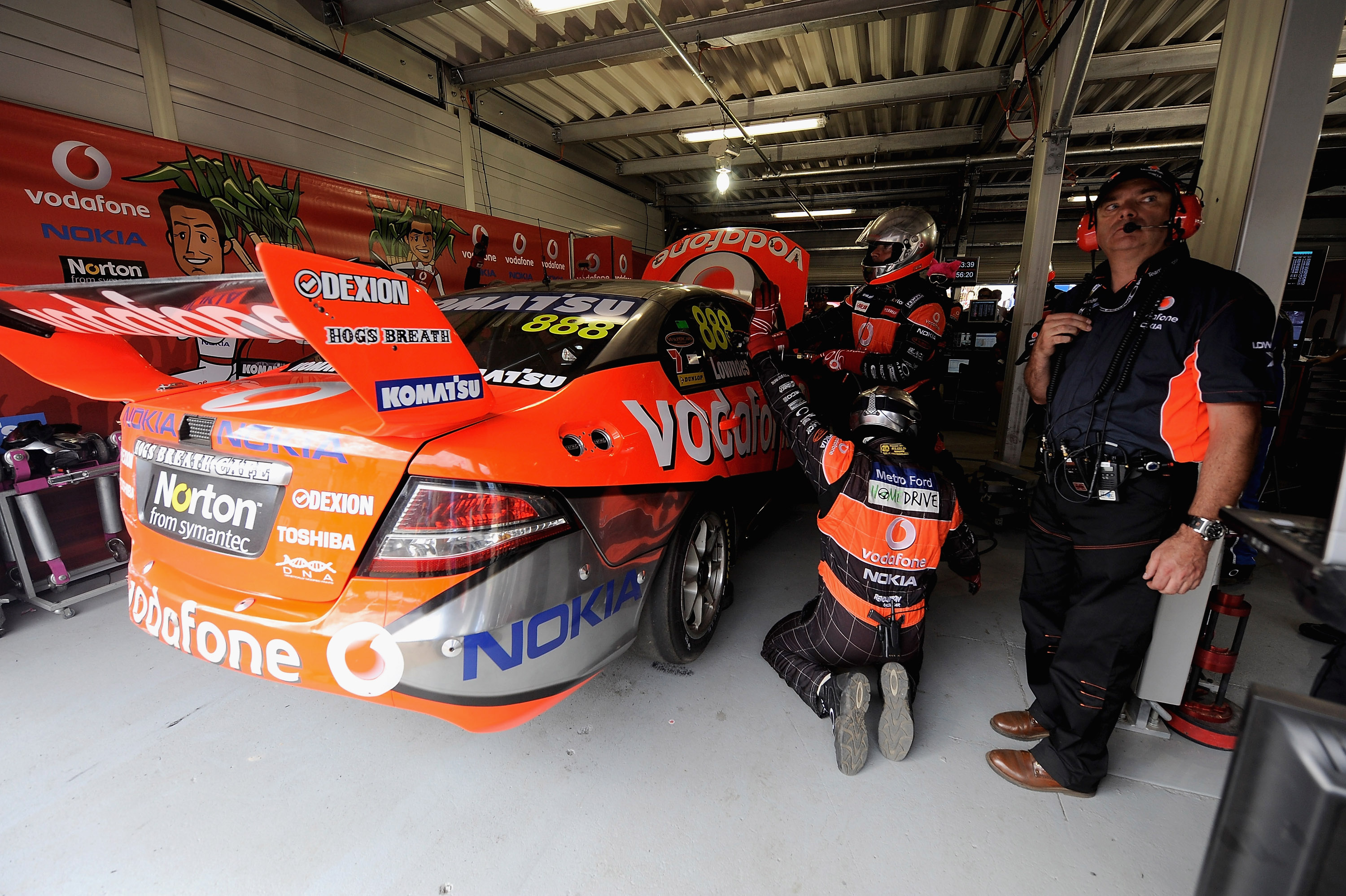
“Also, it was at a time when everyone’s race team was named after themselves – you know, Somebody Somebody Racing, which I thought was just so boring.
“It was time for something different, so I had to come up with a name and I decided on 888. My partners agreed, so that’s what we went with.”
Dane sold his interest in Triple Eight in the UK long ago – it went on to win more BTCC titles under Harrison with Vauxhall and MG – and committed to Australia, adding citizenship to his Irish and British passports.
Dane’s influence on Australian racing over nearly 20 years has been profound. His views are provocative.
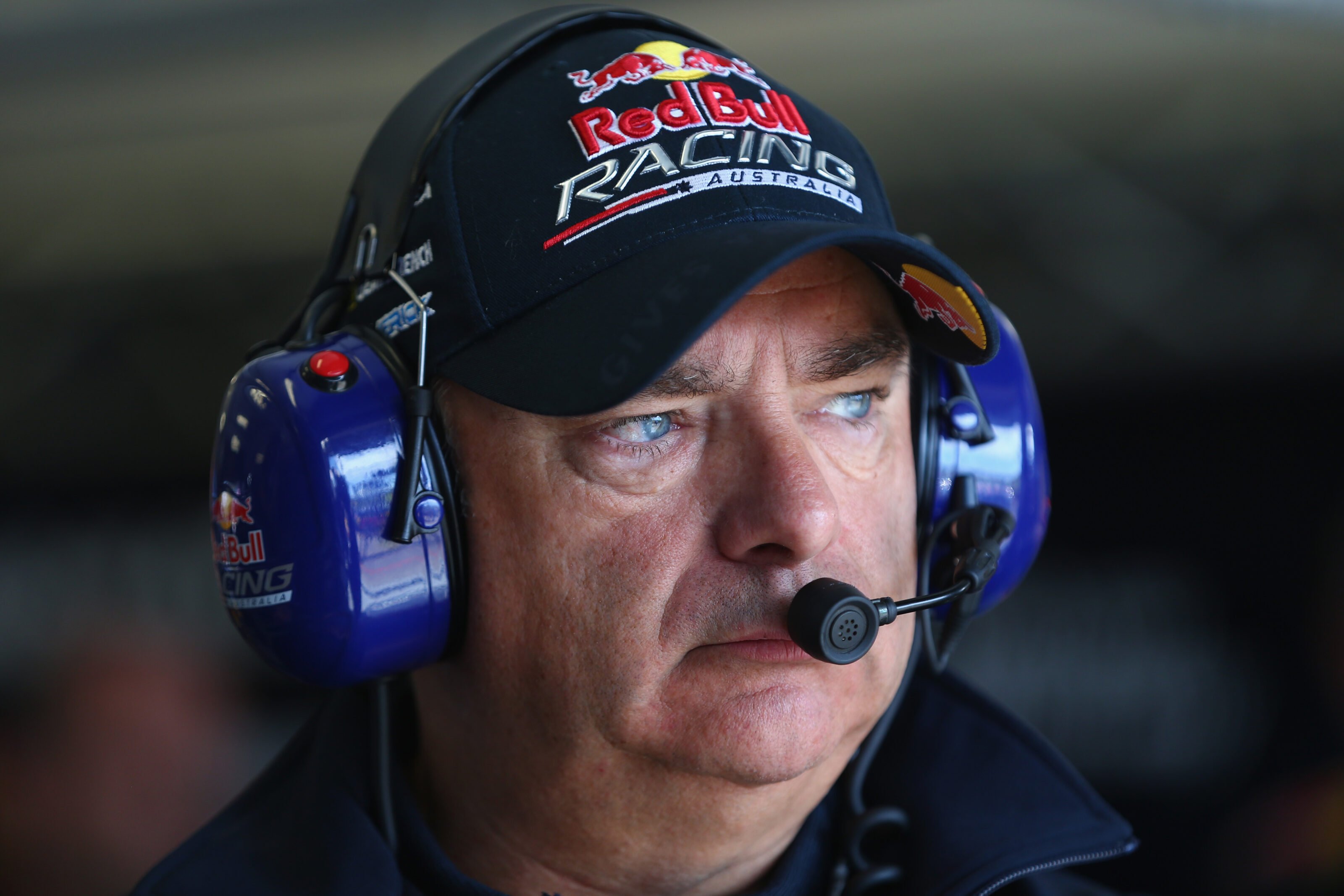
Ford spent the equivalent of A$20 million to win the BTCC in 2000, the last year of the 2.0-litre Super Touring era. The series changed to cheaper, smaller and slower cars in ’01, which is when Dane began to lose his interest despite the Triple Eight Vauxhall Astras emerging as the class of the emasculated field.
Jaded, he turned his attention to Aussie V8 touring car racing, which was riding a growing wave of popularity and prosperity in the early 2000s.
“The heyday of the BTCC was undoubtedly the late 1990s,” Dane recalls. “But then it was clearly becoming too expensive. We did okay in that period, winning races, and we enjoyed it a lot, but it was also clear it was never going to last forever at the level it was.
“So the rules were then changed to try to take it into a new era in 2001 and Triple Eight did very well for quite a few years after that. But by 2002, to be honest, it was quite boring car-wise compared with the Super Touring era, plus I was looking for a new challenge.
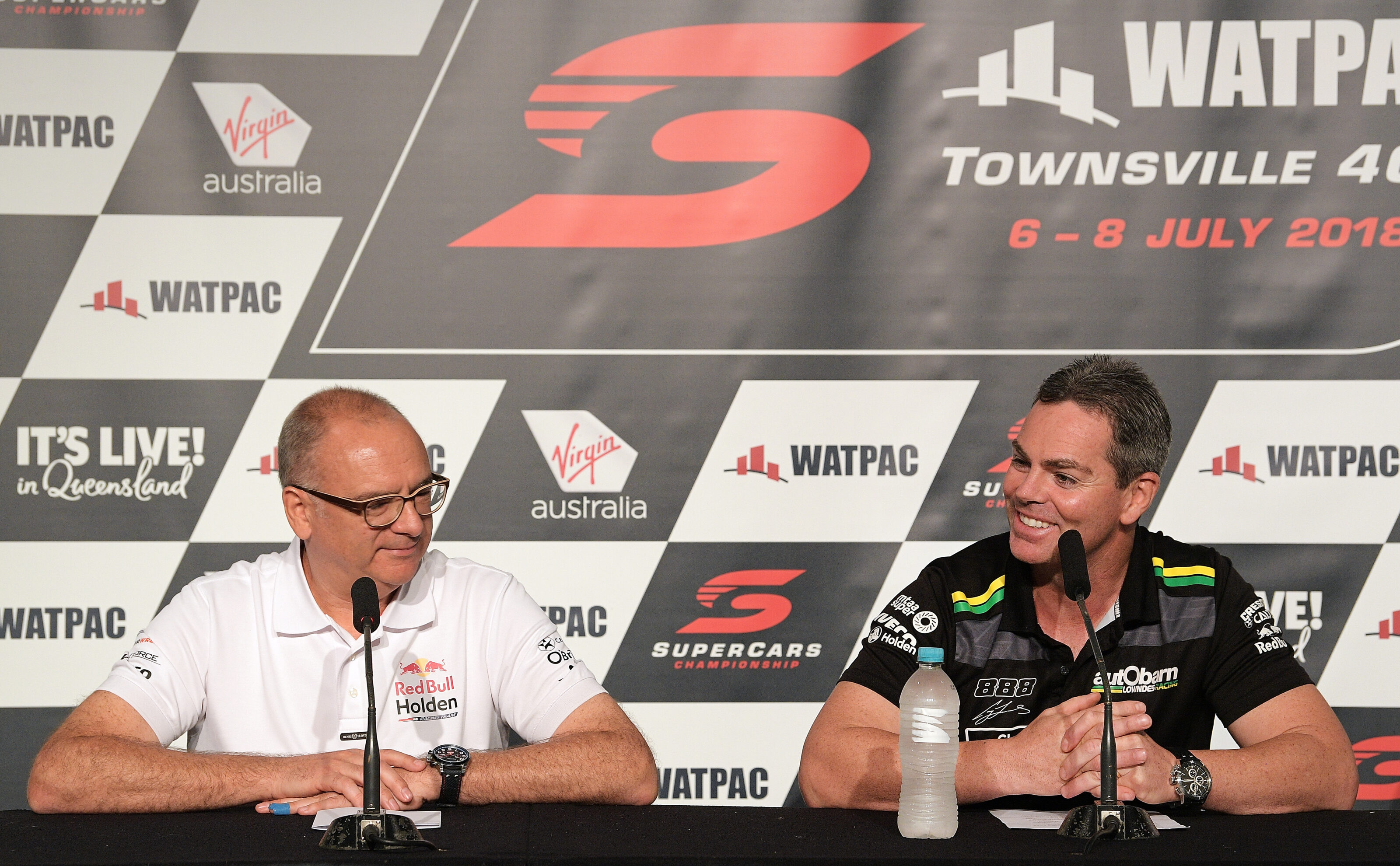
“I’d been out on a couple of trips to Australia in ’01/02. At the Gold Coast Indy in 2002, I spoke with [Supercars founder] Tony Cochrane at length about the landscape and I thought it would be a good punt from a change of scenery point of view and trying to get back involved in a championship with a real commercial footing.
“BTCC had been on a very good commercial footing for some years, but although Triple Eight was still making money, it wasn’t on the same level that it had been and the racing just wasn’t inspiring.”
After an unsuccessful bid for the Holden Racing Team in the wake of TWR’s collapse in early ’03, Dane and his T8 partners bought Brisbane-based John Briggs Motorsport, debuting with a pair of BA Falcons in the Sandown 500 in September of that year.
“The plan was to give it three years to see if there was the potential to build a business and be prepared to invest at the beginning of that,” he says. “The first step was to see if we could win races and I thought if we could do that, we could then turn it into a commercial operation that would stand on its own two feet. So it was a challenge.”
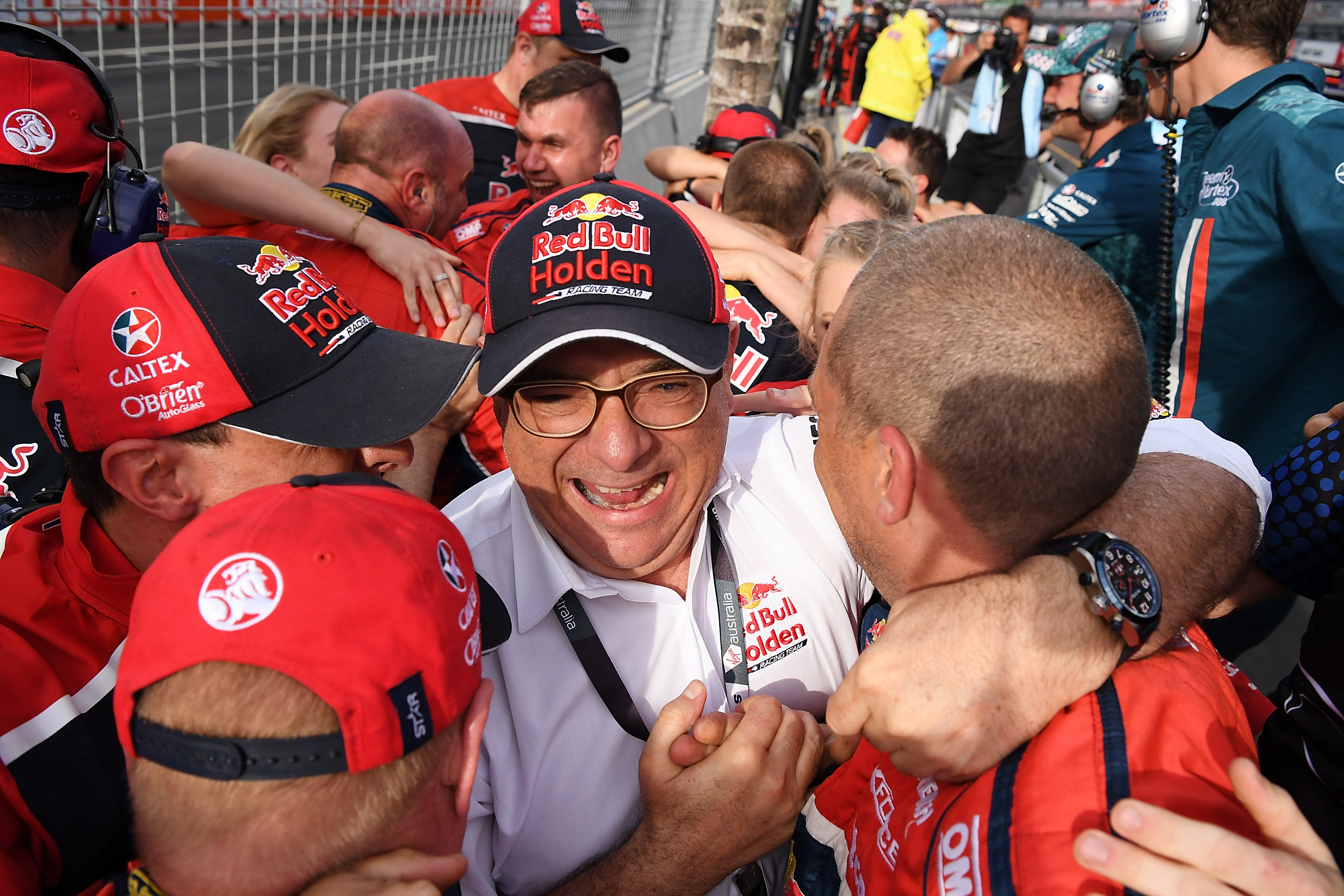
With touring car design genius Ludo Lacroix already on board, the next crucial step towards establishing Triple Eight as a power on and off the track was the signing in 2005 of Craig Lowndes, the most popular, best known and most successful modern generation driver.
Snaring Ford-backed Lowndes bestowed the team with instant credibility and results, as well as ultimately attracting blue chip sponsors like Vodafone, Red Bull and Caltex (now Ampol).
“Signing Craig was pivotal for a couple of reasons,” Dane explains. “Firstly, his ability in the car and taking us to another level from a driving point of view, but also because of his appeal to major sponsors. By 2004, I was looking at the long-term commercial landscape and what the look of the team was likely to be, and to get it to where I wanted it to be, we were going to need somebody with presence, a superstar of the sport, really, which was Craig.”
Lowndes came close to winning the V8 title in ’06, when he scored his second – and most meaningful – Bathurst 1000 and went on to win the Mount Panorama classic five more times before retiring from full-time racing at the end of the 2018 season. Now 47, he is still a competitive co-driver, partnering Whincup.
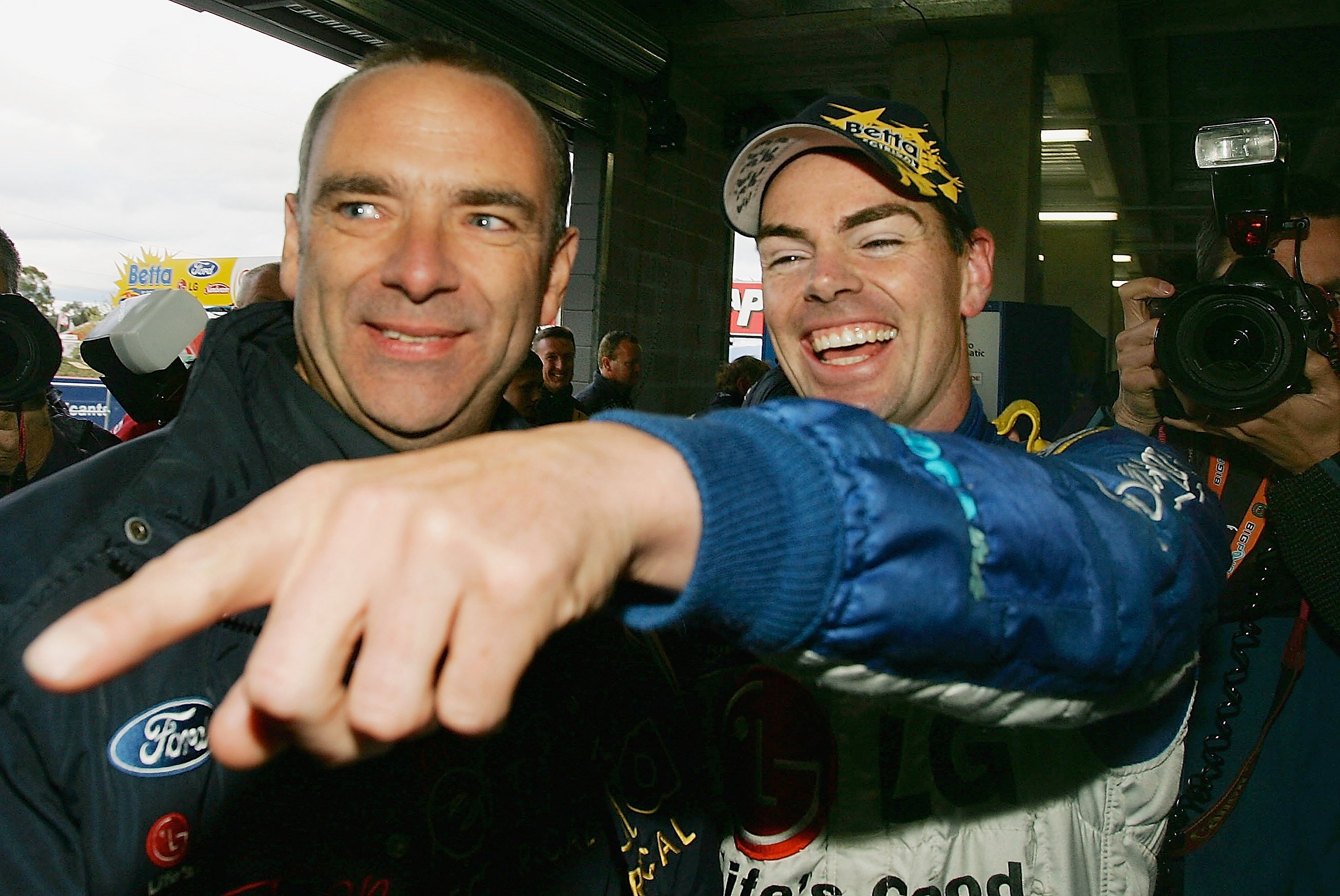
Dane’s commercial acuity was inspired by the enterprise of leading F1 team owners in his formative years in racing in the late 1980s and early ’90s.
“We didn’t have a fairy godmother to fall back on,” he says. “We had to make it stack up and then really had to go and sell. And if there’s one thing I’ve done all my life, it’s sell.
“All the people I’ve looked up to in the era of racing entrepreneurs have first and foremost been salesmen. At the end of the day, people like Frank Williams, Ken Tyrrell and Ron Dennis were all salesmen.
“That ability has held me in good stead, plus having a couple of good people over the past 18 years working with me.”
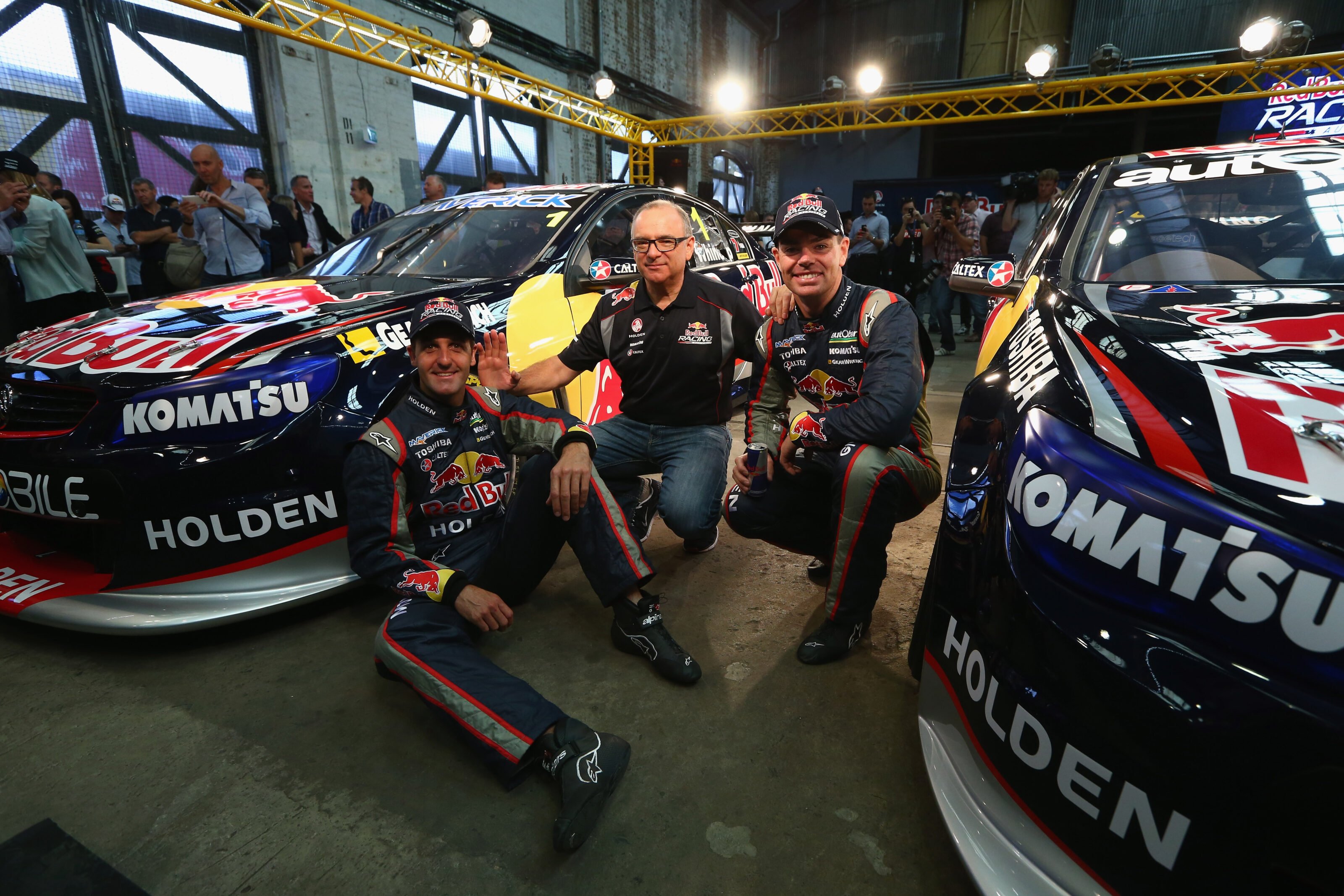
The next – and perhaps greatest – masterstroke was hiring Jamie Whincup to partner Lowndes in ’06. Sacked by noted talent-spotting team owner Garry Rogers after the ’03 season, no-one – not even Dane – could have known Whincup would go on to break all meaningful records over the next 15 years.
“I certainly didn’t have an inkling that he’d become the greatest ever,” he admits. “That would be nonsense. At the time, we wanted a young up-and-coming driver who could partner Craig, first and foremost to win Bathurst, and then to become a part of the next generation of leading drivers. There were three people on the list, which were Mark Winterbottom, Will Davison and Jamie Whincup.
“Jamie didn’t have a manager, he didn’t have any baggage and he didn’t have any stupid ideas about how much he should be paid. He didn’t have a drive in 2006 and it was really just his application to getting the job that got him the seat.
“He was at the top of the list because of the job he had done with [the late] Jason Richards in the enduros in ’05 (including runner-up at Bathurst). How he applied himself to getting the drive was outstanding.”
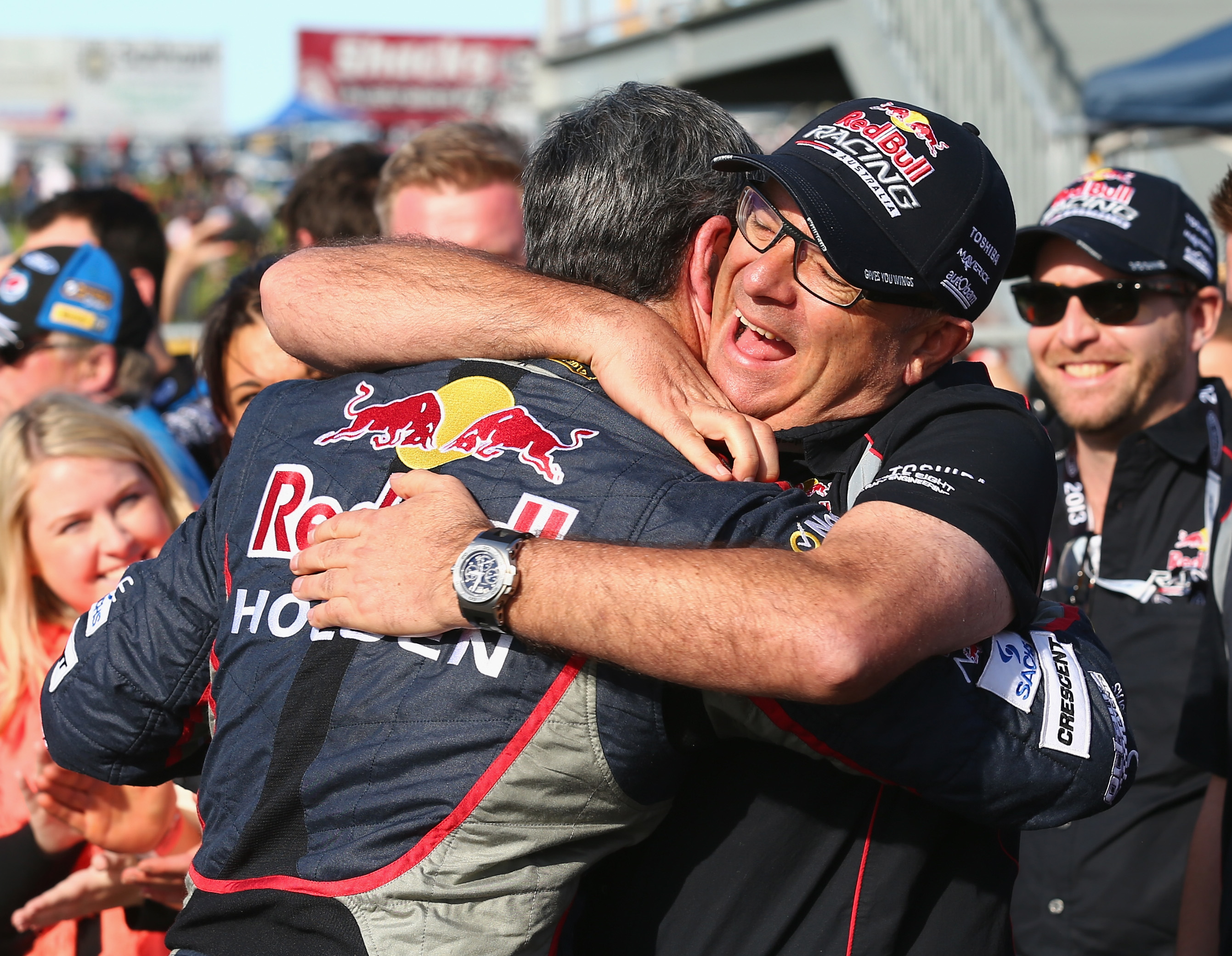
Whincup, 38, has won seven championships (two more than V8 legends Dick Johnson, Mark Skaife and Ian Geoghegan), four Bathurst 1000s (and famously threw away at least four more) and 123 races – all with Triple Eight.
The key to Whincup’s success, according to Dane, is a combination of extraordinary talent and exceptional dedication.
“First and foremost, he’s a very skilled driver,” he shrugs. “You have to have a high level of natural talent to operate at the top of the sport in Australia. From the moment he tested for us in December 2005, we could straight away see his potential as a driver. But then he applied himself and kept raising the bar in terms of what he needed to do to make sure that he carried on winning.
“So it was one thing to win through natural talent in a good car with a good structure around him, but to keep doing that and staying on top for such a long time is what makes him so good. He never rested on his laurels – and still doesn’t.”
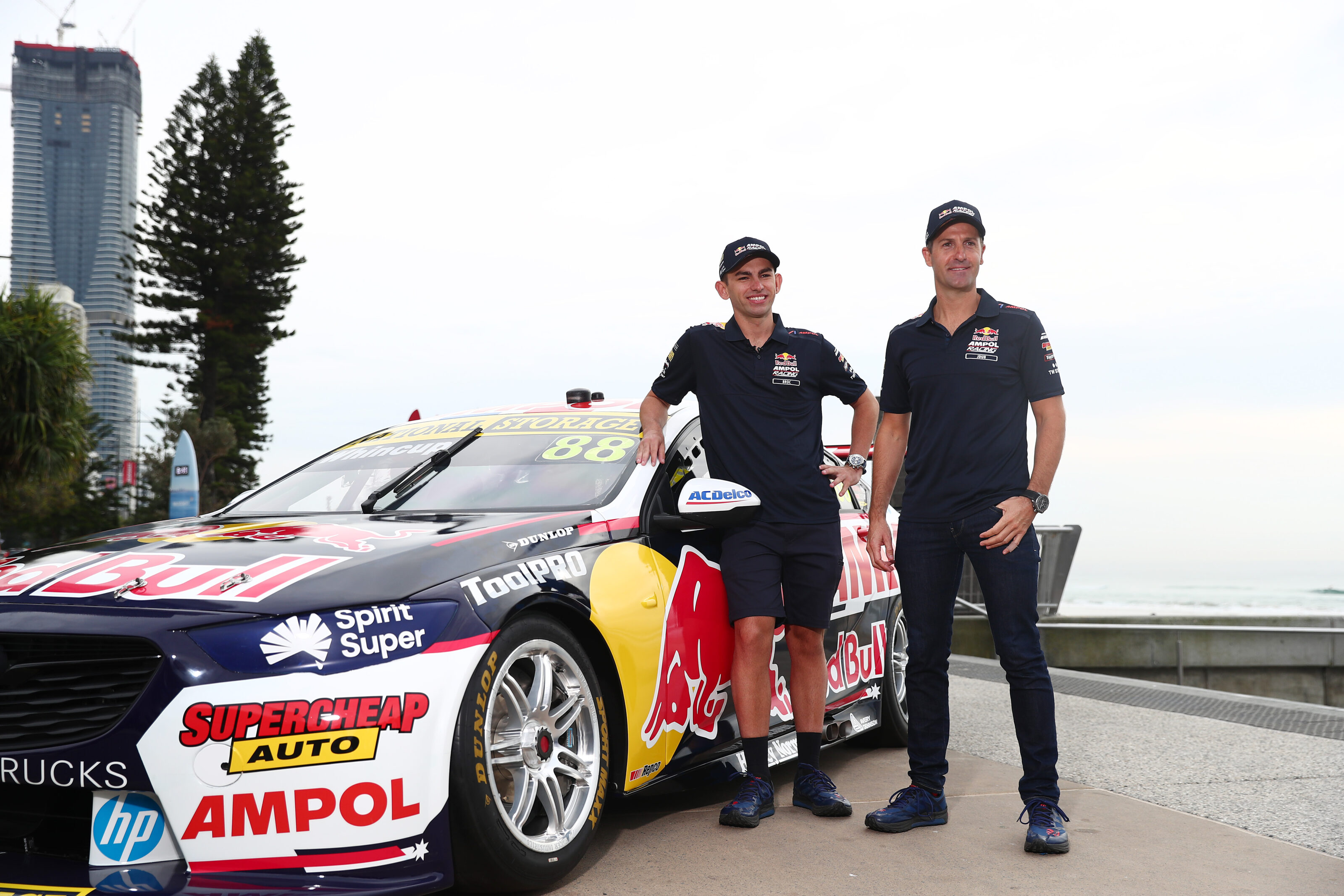
Triple Eight was an entrenched factory-backed Ford team until an inexplicable change of policy at Broadmeadows saw the team shunned in 2009. Famously, its FG Falcons ran that season with the Ford grille badges replaced by the snarling boar logo of minor backer Hog’s Breath Cafe.
“We had a very good relationship with Ford from 2004 until the end of 2007,” Dane declares. “We had a verbal deal at the end of 2007 that they would renew their contract for 2009 onwards – because ’08 was already locked in – when the FG Falcon would hit the track.
“We were doing a lot of work on the FG. In fact, although Ford Performance Racing was the homologation team, all the aero work was being developed by Triple Eight.
“At that stage you were allowed to build wind tunnel models and CFD wasn’t at the level that it is today. We built the wind tunnel model, we were running that program in England for Ford. Then management changed. There was a group of people in Ford that had absolutely no idea about their own heritage, let alone motor sport, and two weeks after we signed off on the FG and effectively handed over everything we’d done, the incumbent marketing person at the time famously came to our place – and also to Dick Johnson Racing – and said ‘Okay, we’re not going to have a deal with you in 2009. We’re not going to renew, we’re just going to stick with Stone Brothers and [Ford Performance Racing].’
“It was handled very poorly, but that happens sometimes. It’s corporate life.”
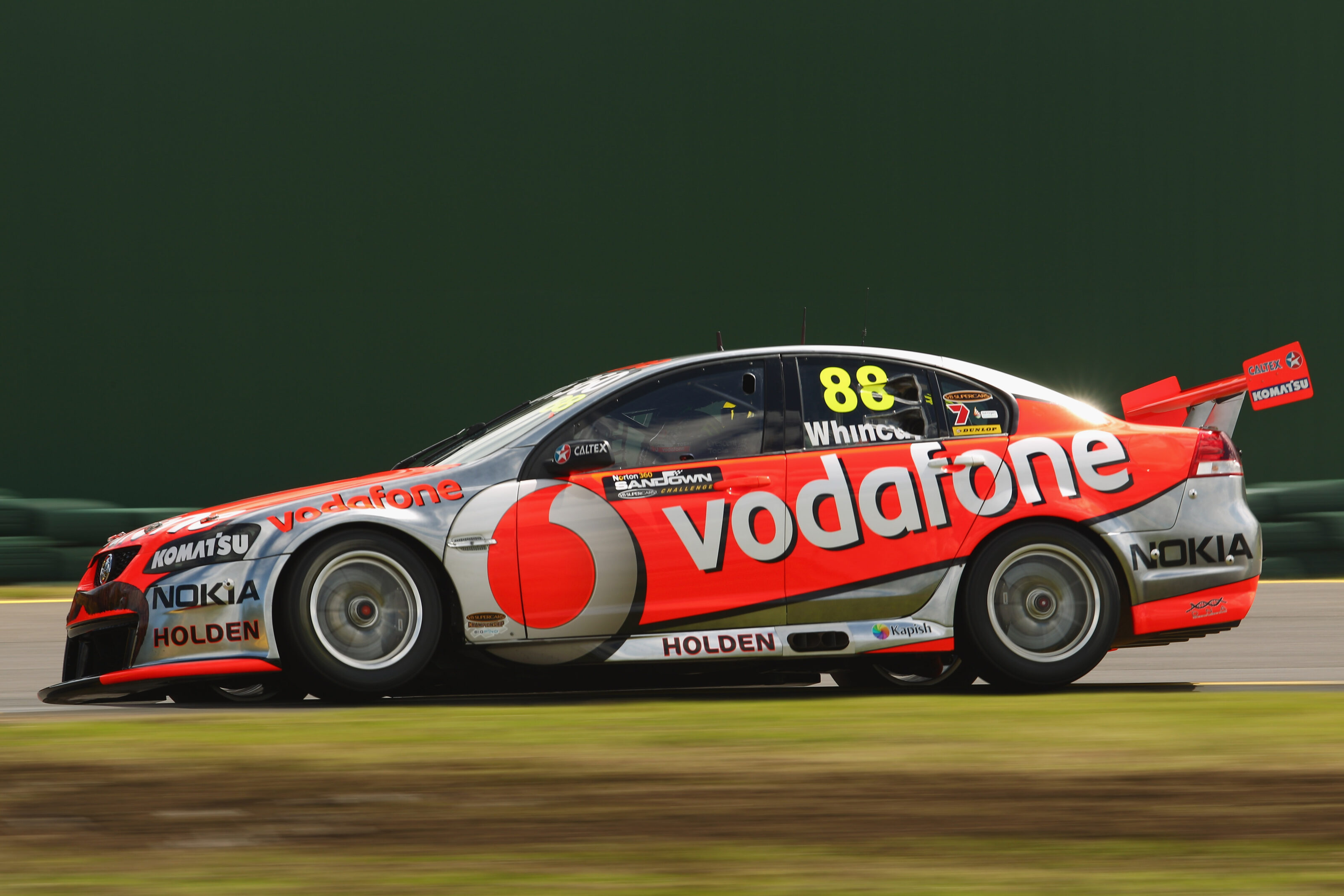
Ford’s decision threw Triple Eight into the arms of Holden, joining HRT as a fully Fishermans Bend-backed squad in 2010. T8 became the most successful Holden team and took over the HRT imprimatur in 2018. It scored the last official Holden factory team win at Bathurst in 2020.
Although Holden fans never really took to the HRT moniker’s move from Clayton to Banyo – especially the demise of the iconic Lion/helmet graphic – Dane is proud of his stewardship of the brand, the assumption of which he described as “massive”.
“It was a huge moment,” he gushes. “We turned out to be the last custodian of the Holden Racing Team brand and I think we did them proud, taking HRT back to being a winning brand on a very regular basis [including HRT’s first drivers’ and teams’ titles since 2002].”
In a twist of fate, Triple Eight took over the HRT mantle from the Walkinshaw group (which had it for more than a quarter of a century) after an ambitious bid in early ’03 when the team was caught up in TWR’s collapse.
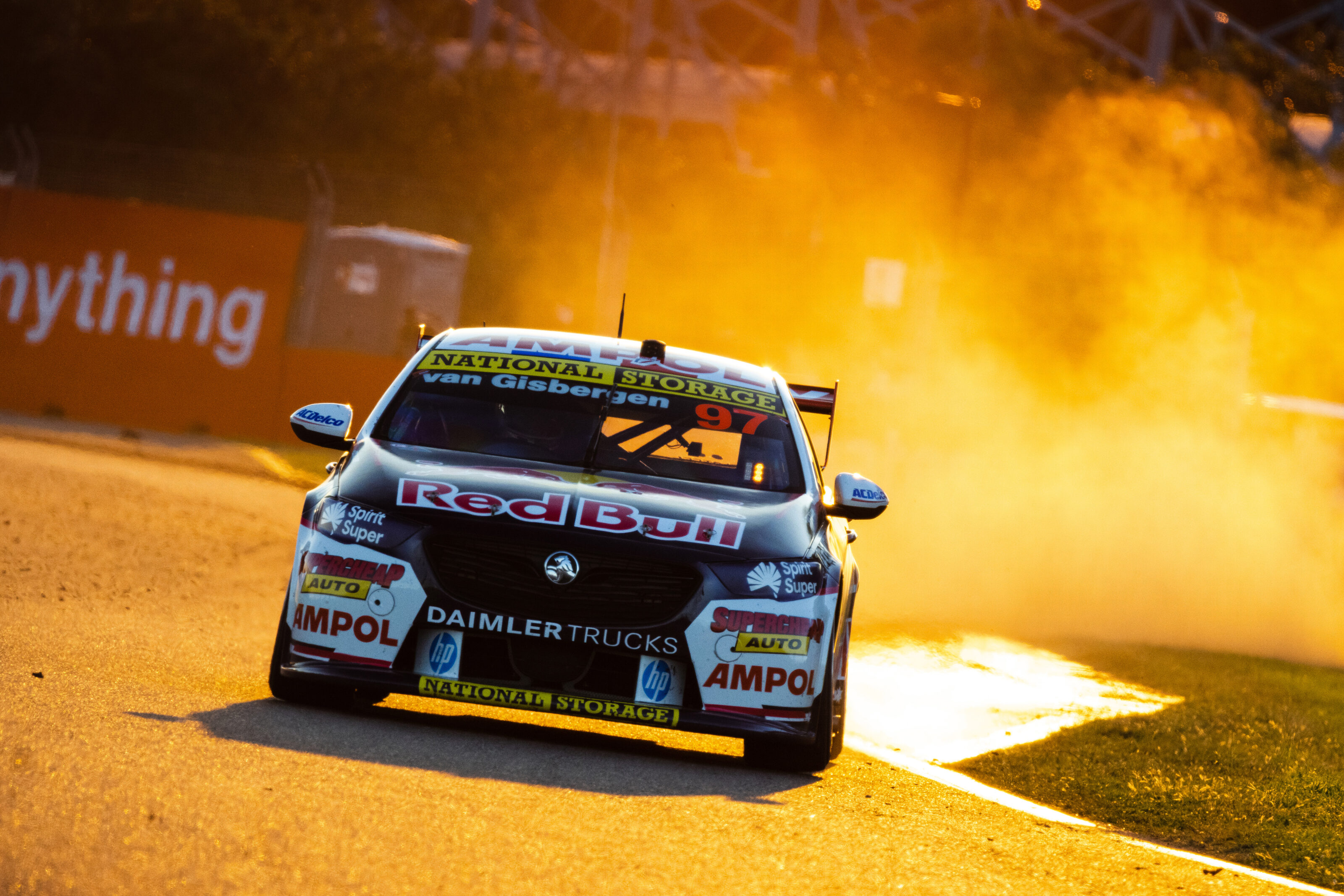
Dane’s pitch was aided by former Holden executive Kevin Wale, who by then had been promoted to running Vauxhall in the UK.
“He certainly batted for us, but there were clearly other forces at work and politics involved, etc, and they offered us the second-tier team (Kmart Racing, which later became Kelly Racing), but that didn’t appeal to me,” he recounts. “There wasn’t anything immediately obvious for us in Australia, but then [ex-BTCC star turned V8 Supercars driver] Paul Radisich mentioned to me that the John Briggs operation could be for sale.
“I went to Brisbane to have a look and made him an offer for the assets of the business, which he accepted just before I flew back to the UK.”
The greatest challenge Dane faced in Supercars was the involvement of American business and racing titan Roger Penske, who took a controlling interest in Dick Johnson Racing in 2015. DJR Team Penske ended Triple Eight’s hegemony, winning three teams’ and drivers’ titles from 2017-2020, and propelling Scott McLaughlin to stardom – and a place in Penske’s storied IndyCar team in the USA.
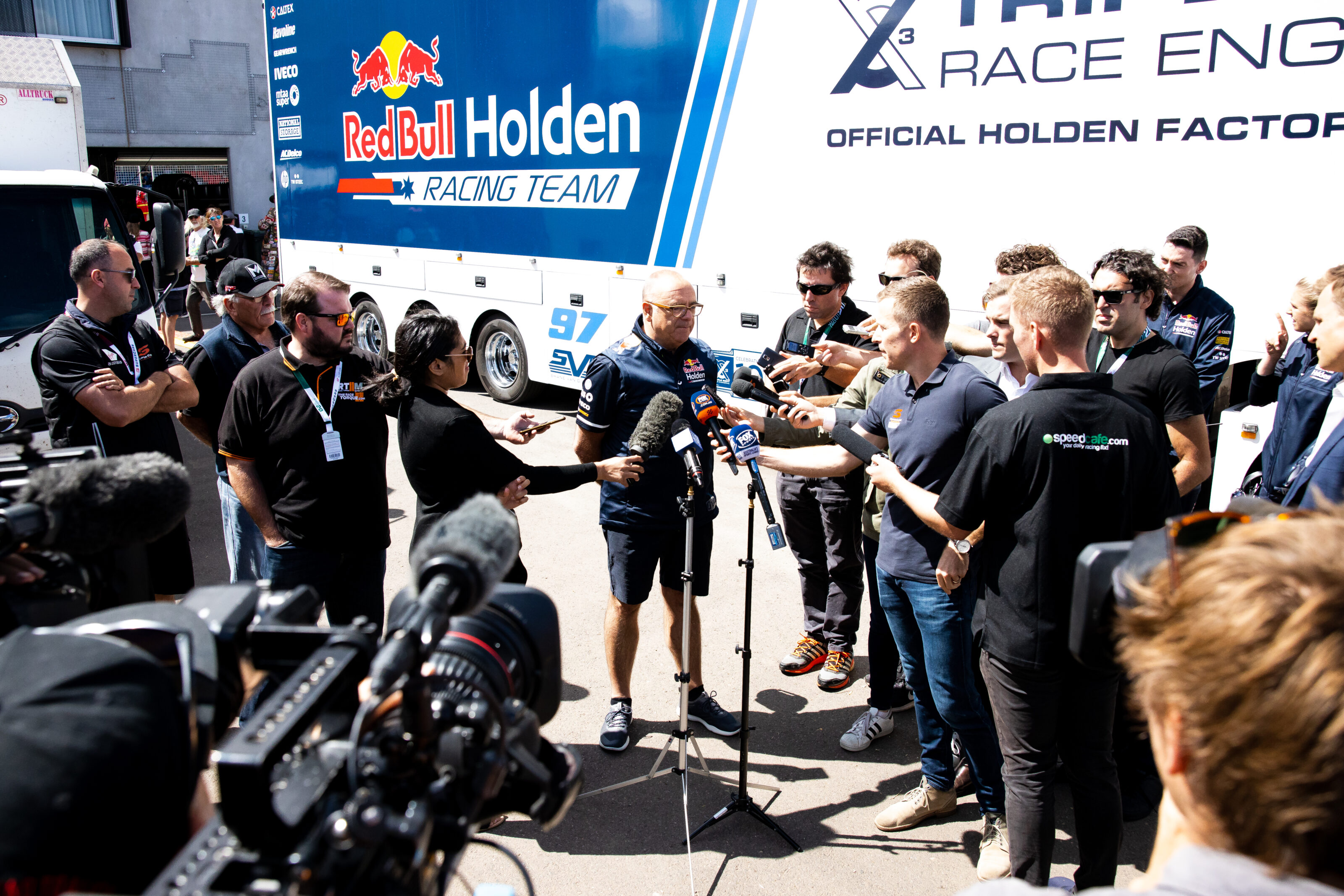
Penske upped the ante, exceeding the $8 million per year budget for a front-running Supercars team by offsetting its cost against his trans-Pacific business conglomerate. DJRTP also poached Lacroix, with the eccentric Frenchman’s design and engineering brilliance and lateral thinking providing a big boost in combination with McLaughlin’s gifted driving.
Penske pulled out at the end of last season, taking McLaughlin with him, and DJR has struggled to challenge T8.
Dane reluctantly admits that Penske’s presence tested Triple Eight, although he remains defiant that his operation withstood the onslaught: “The Penske thing was good competition in terms of raising the game, but they were operating on a totally different level budget-wise,” he sneers. “And I think what validates what we do is that we don’t have a safety net. We have to make money year in, year out.
“Roger Penske said to me some years ago, ‘One of the things I admire about you, like [his great IndyCar rivals] Chip Ganassi and Michael Andretti, you have to make your business stack up. I don’t.’ Which is fair enough – he doesn’t have to.
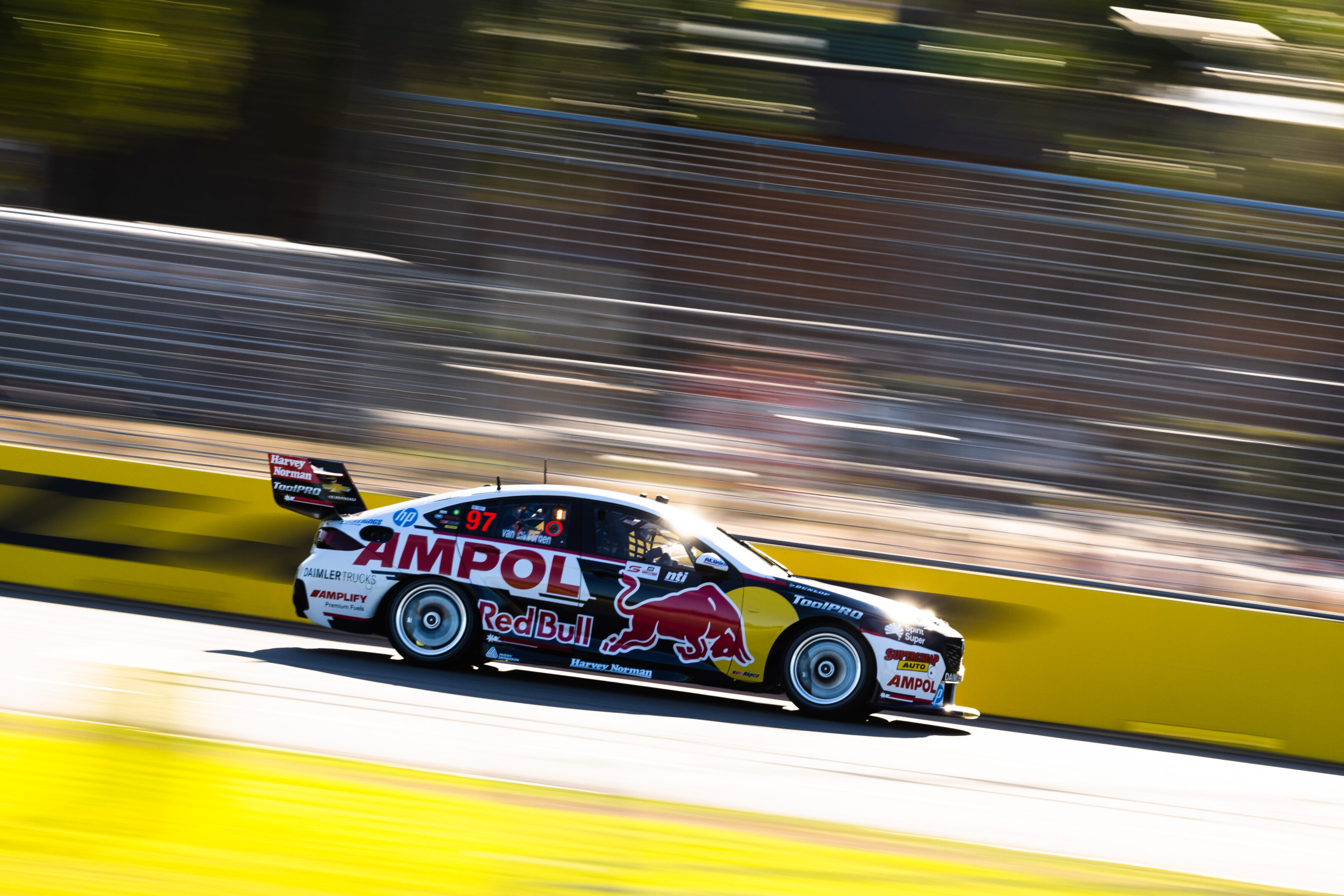
“Racing is paper-clip money in his organisation. When you have to take on someone who’s spending probably 50 percent more – if not more – than you are, then you have to be smart to win anything.
“The strength of Triple Eight is our culture. I think I’ve proved time and time again that people can come along and steal people from Triple Eight, but it hasn’t made a difference to the end result.”
In 2022, Triple Eight will have a mix of new and old leadership. Whincup and Jessica Dane will lead the organisation – which employs 55 full-time staff at two sites close together at Banyo near Brisbane Airport. Supercars champion elect Shane van Gisbergen will be joined by young gun Broc Feeney, staying with ZB Commodore racers before switching in 2023 to Gen3 Chev Camaros developed with modest GM support by Triple Eight to take on a revised Ford-backed Mustang.
Dane anointed Whincup as his successor as team principal and is convinced his fastidious protege is well equipped to uphold his legacy.
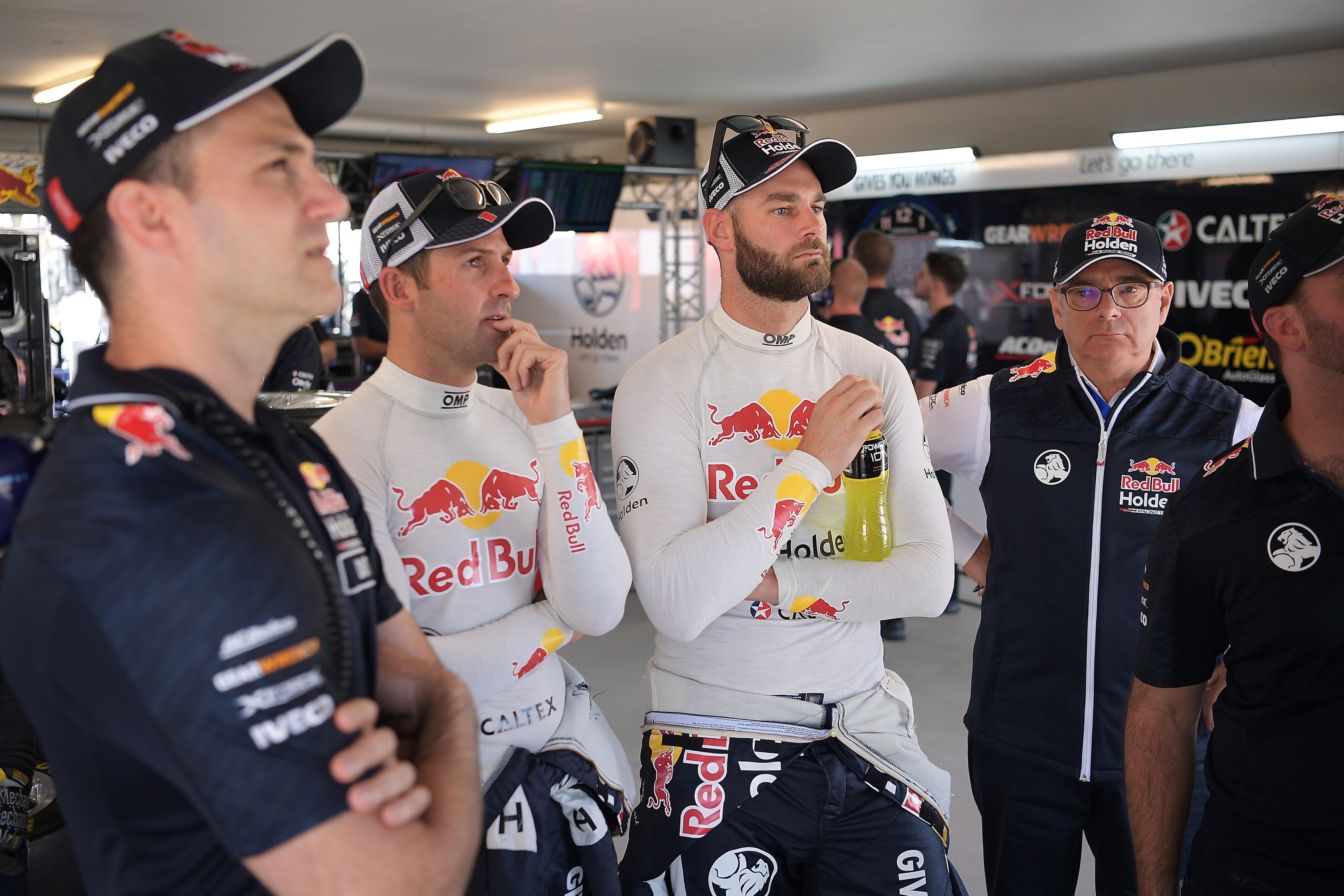
“First and foremost, because he’s a racer,” he proclaims. “He knows racing. For me, the biggest failing in this sport is people who don’t have a good balance between the commercial side and the racing side. You can’t have one without the other, but understanding the racing side is so important and the number of people in the sport who have that balance is extremely limited. Jamie does understand both sides.
“He’s been in the hot seat of racing as a professional driver for nearly 20 years, but he also understands the importance of the commercial side of the business. And he has what I regard as the biggest single attribute for running a successful team – the hunger to win.
“You have to want to win more than you want to make money and he has that attitude. Of course, you have to be aware of the financial implications, but success on the track normally results in commercial strength.
“Jamie absolutely understands that once you start to constrain the drivers and the engineers, then you’re on a hiding to nothing.”
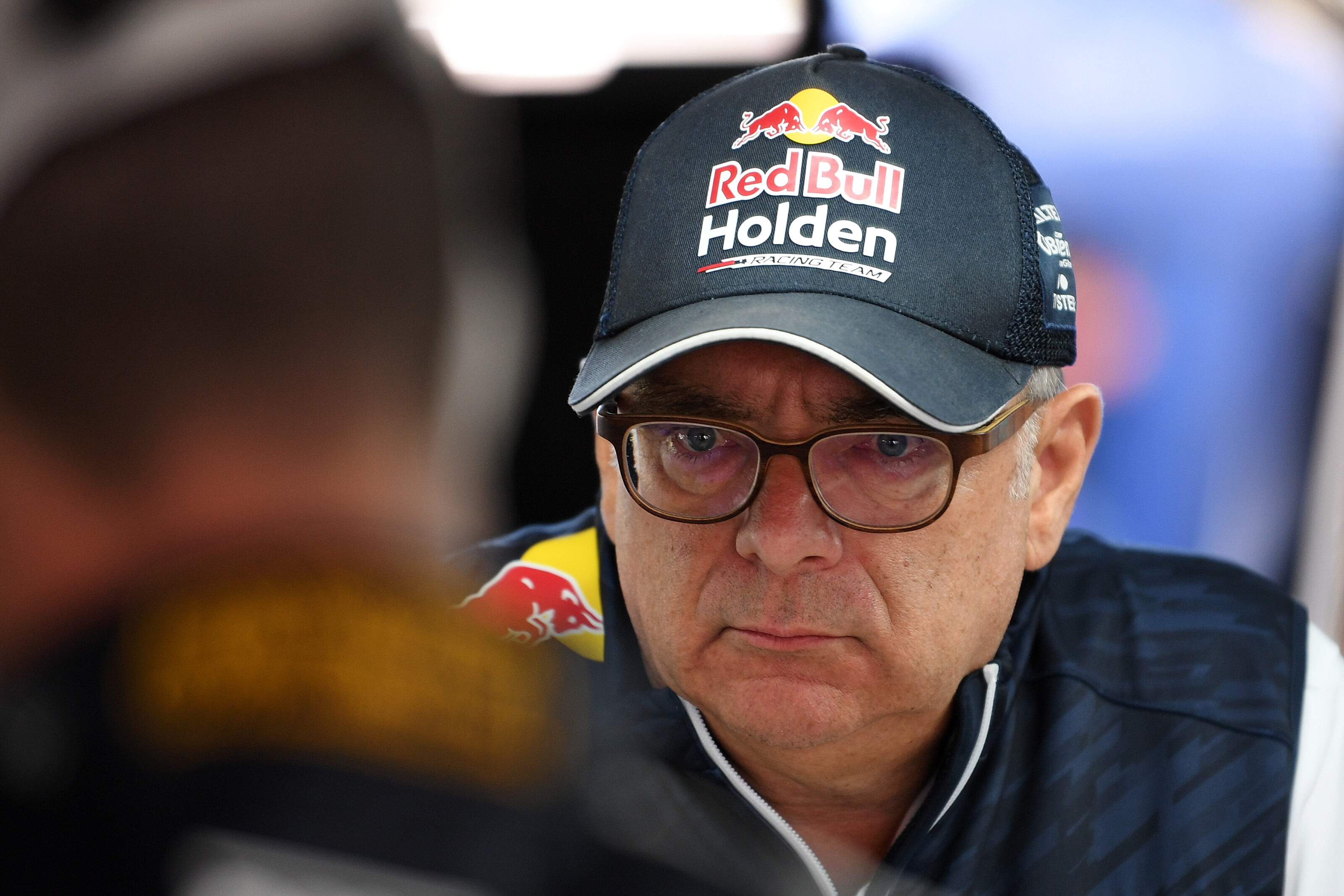
While Dane will remain chairman and a minor shareholder in Triple Eight, he vows that he really will step back from next year. “I like the term retirement,” he states. “What I’ve said to Jessica and Jamie and Tony Quinn is that I’ll continue on an as-needed basis next year part-time. I don’t want to be like a racing dad who gets in the way.
“I’ll give them a bit of my time for a year. I’ll certainly never be a team owner again, but I’m not saying I’ll never do anything in racing again. However, I do want to have some flexibility about what I do with my time.
“The COVID situation has only cemented the position I [have] already been developing over the past four or five years, which is to have more time to myself. There are some places in the world I want to go to while I can still walk around.”
Roland William Surrey Dane will never be remembered as a fan favourite. Too smug to be loved. But he will be acknowledged and admired for his efforts to raise standards in Supercars. Some will celebrate his departure; some will be suspicious that he will continue as the master puppeteer behind the scenes; and the rest will accept that V8 racing’s Great Dane is among the most significant figures in Australian motorsport history.
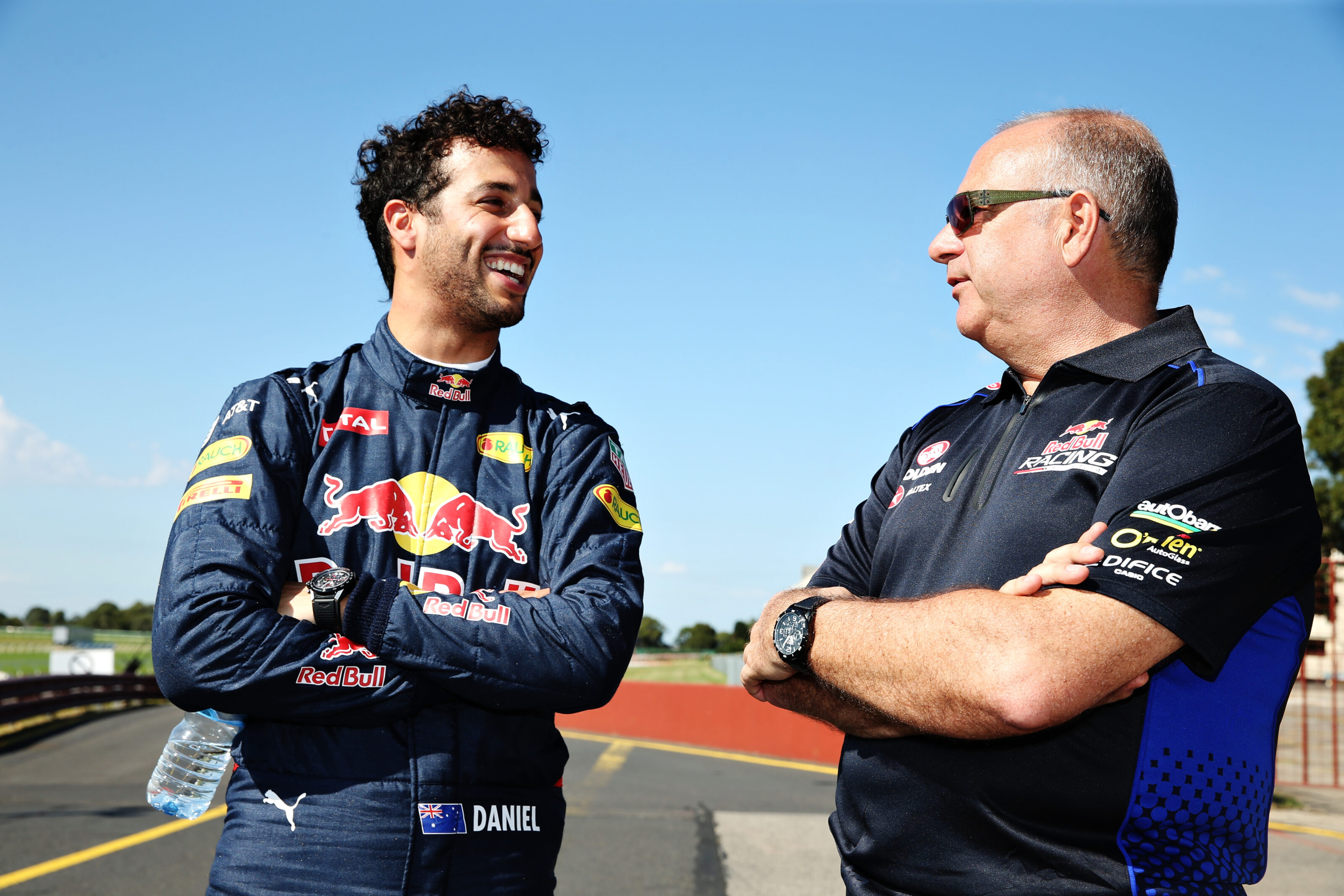
Dane on Shane: One Kiwi that really does fly
Unbackable favourite to win the 2021 Supercars championship, Triple Eight spearhead Shane van Gisbergen is a driving freak.
SVG is ‘old school’ in that he’ll race – and win in – anything on four wheels. The Gold Coast-based New Zealander has been on fire since winning last year’s season-ending Bathurst 1000, also capturing the NZ Grand Prix (from the pit lane after accidentally triggering his car’s fire extinguisher!) and 11 of the 19 races of this year’s Supercars championship held before the latest COVID crisis intervened.
Extraordinarily, van Gisbergen, 32, swept the Sandown SuperSprint just a few weeks after breaking his left collar bone in a mountain bike accident, shrugging off excruciating pain.
Winner of the 2016 V8 title in his first season with Triple Eight, SVG extends the line of tin-top superstars who’ve driven for Dane over the past 25 years. That list even includes the late, great Peter Brock, who contested 1997’s 2.0-litre Bathurst 1000 in a T8 Vectra.
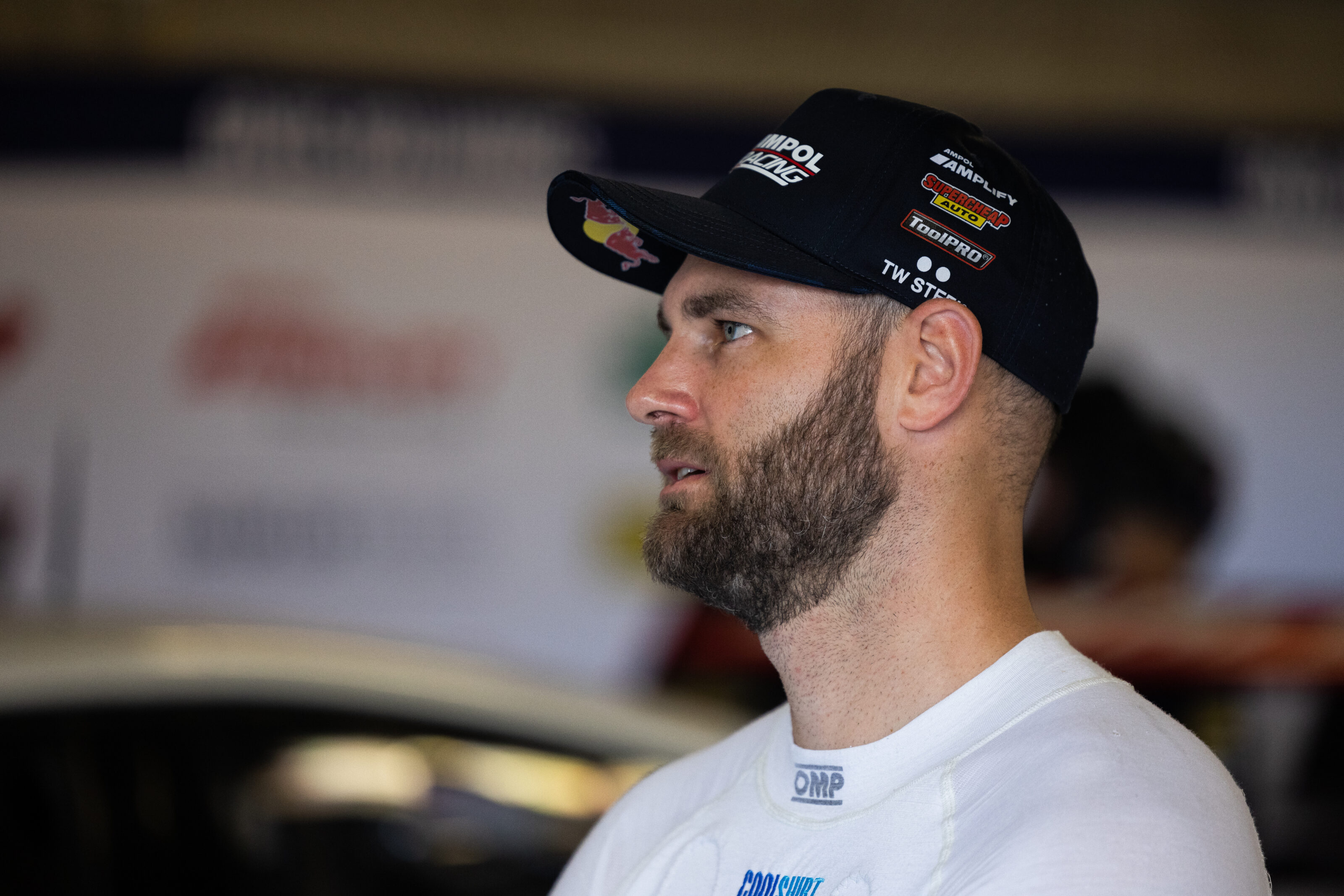
Dane set his sights on SVG a decade ago, marvelling at his speed, car control and virtuosity. Later intelligence from customer team Tekno Autosports, where he was a race winner and title contender, also confirmed that despite his less than scintillating TV interviews, he was an especially smart racer.
“He is a thinker,” said Dane, who signed van Gisbergen 18 months before he joined Triple Eight. “He’s exceptional the way he thinks about racing. He has a great racing brain.”
SVG was brought in as the long-term replacement for fan favourite Craig Lowndes, who went into a satellite entry for three years before retiring at the end of 2018.
Dane is confident SVG will keep Triple Eight at the front in the beginning of the next phase of team’s journey.
“Everyone has a shelf life, but I don’t think Shane is anywhere near the end of it at the moment,” Dane predicts.
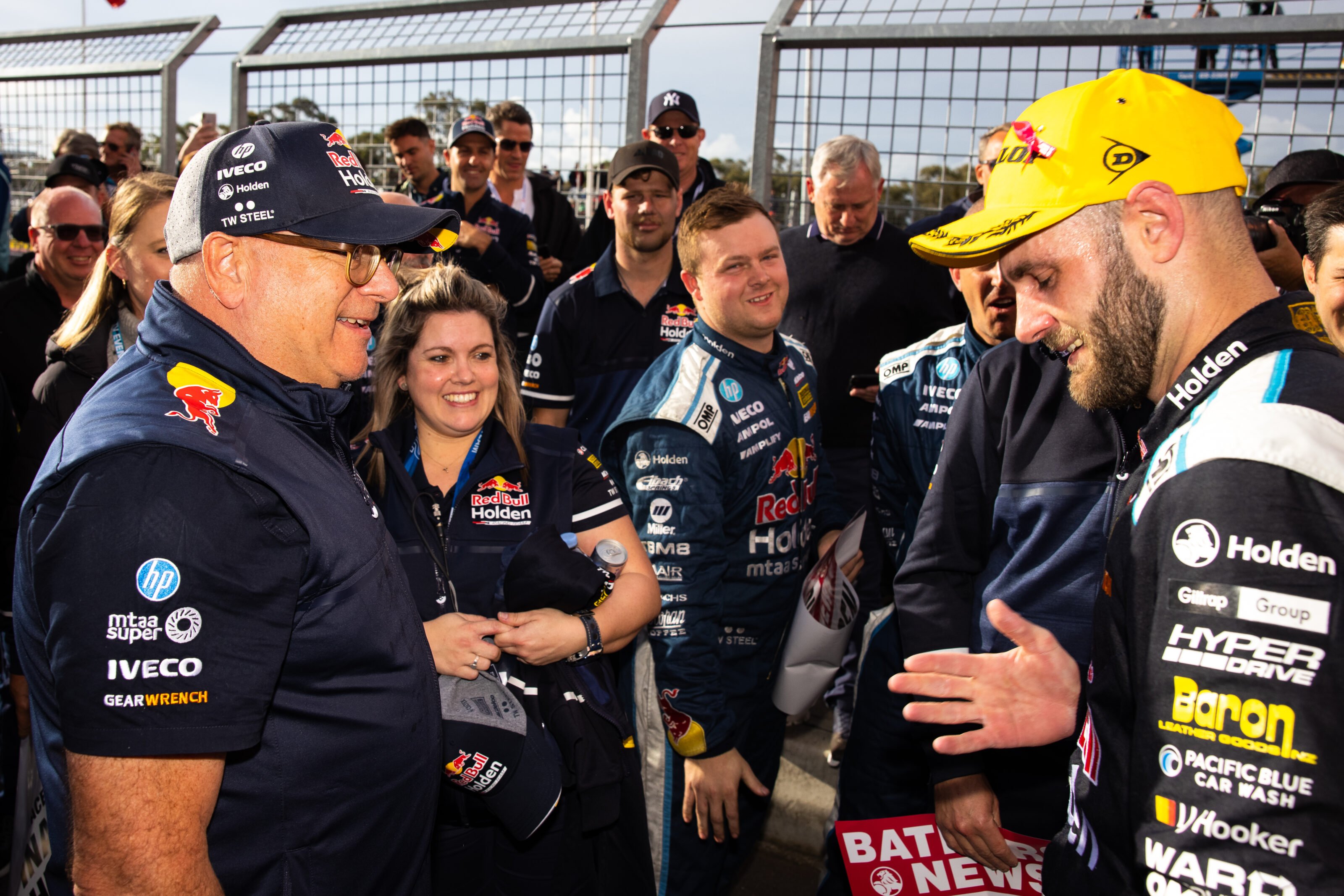
We recommend
-
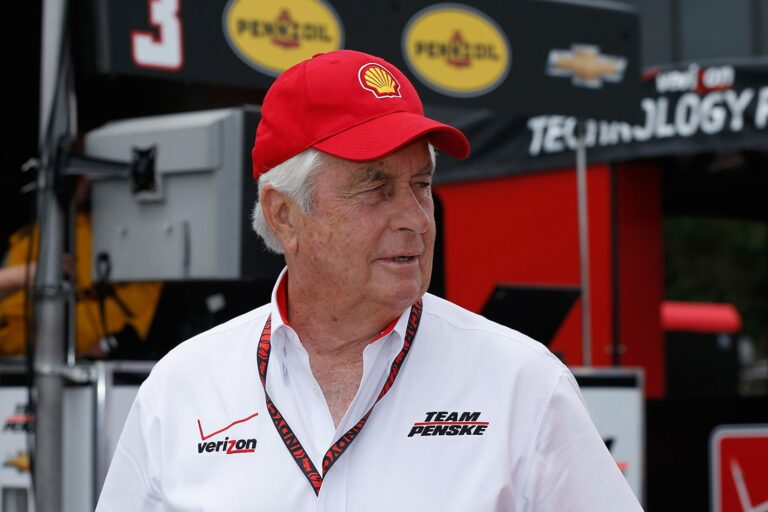 Features
FeaturesOpinion: DJR Team Penske vs Roland Dane
Penske’s power is the greatest threat to Triple Eight’s Supercars scorecard
-
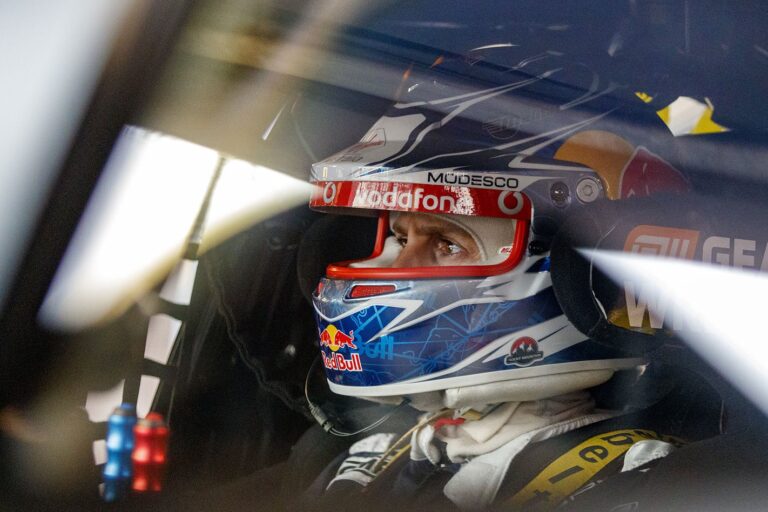 News
NewsWhy Jamie Whincup is retiring from racing to become a team boss
It’s out of the driver’s seat, into the hot seat for J-Dub
-
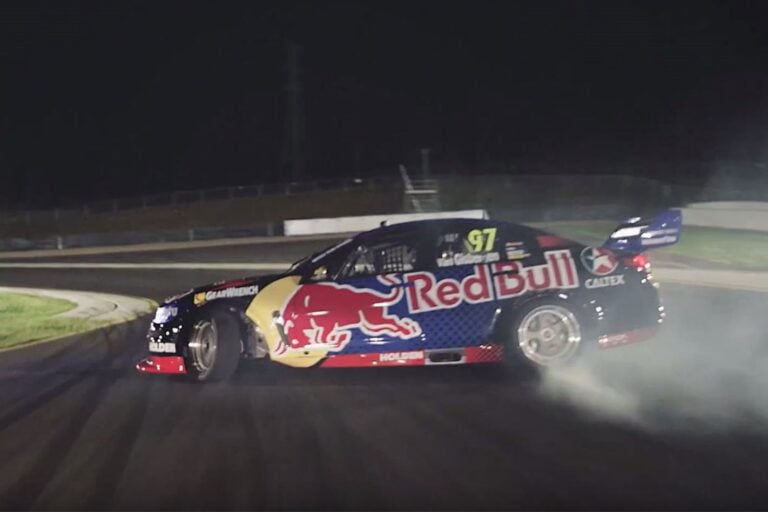 News
NewsShane Van Gisbergen Supercar night drifting
Kiwi star tears up Sydney Motorsport Park

